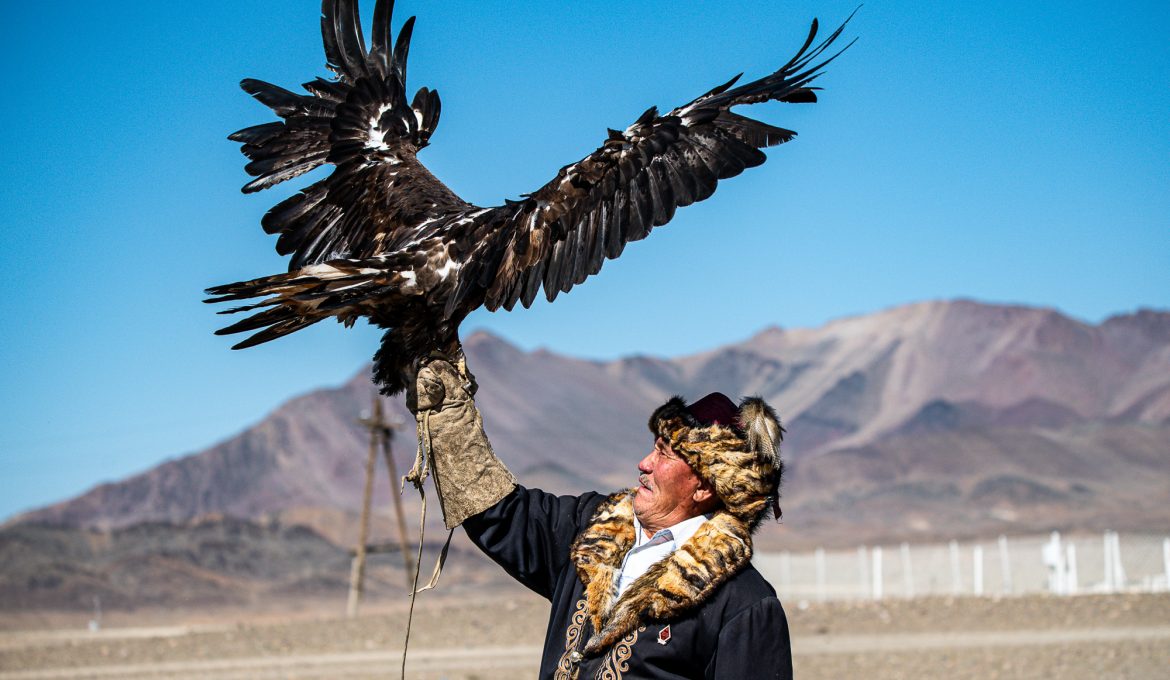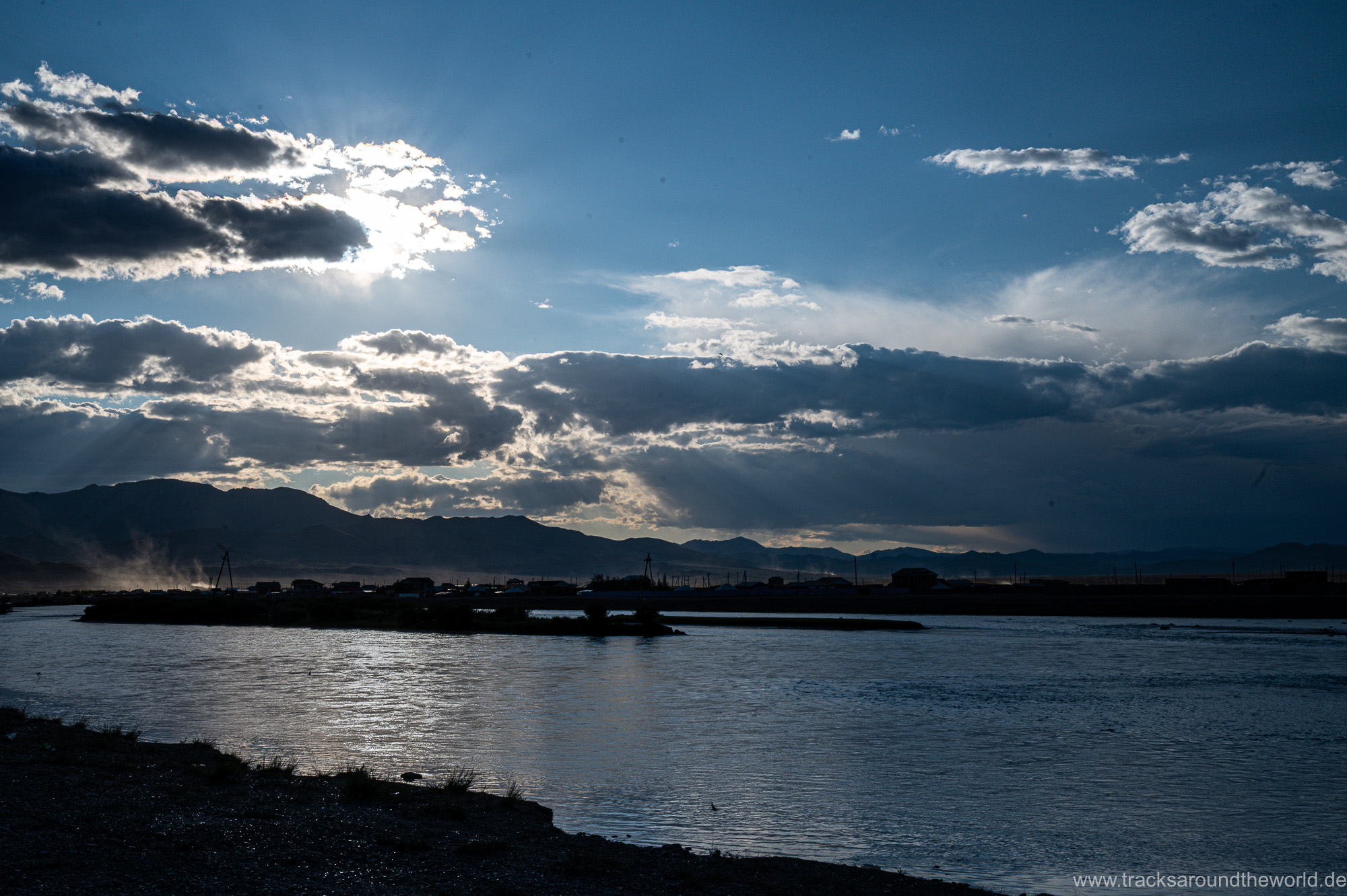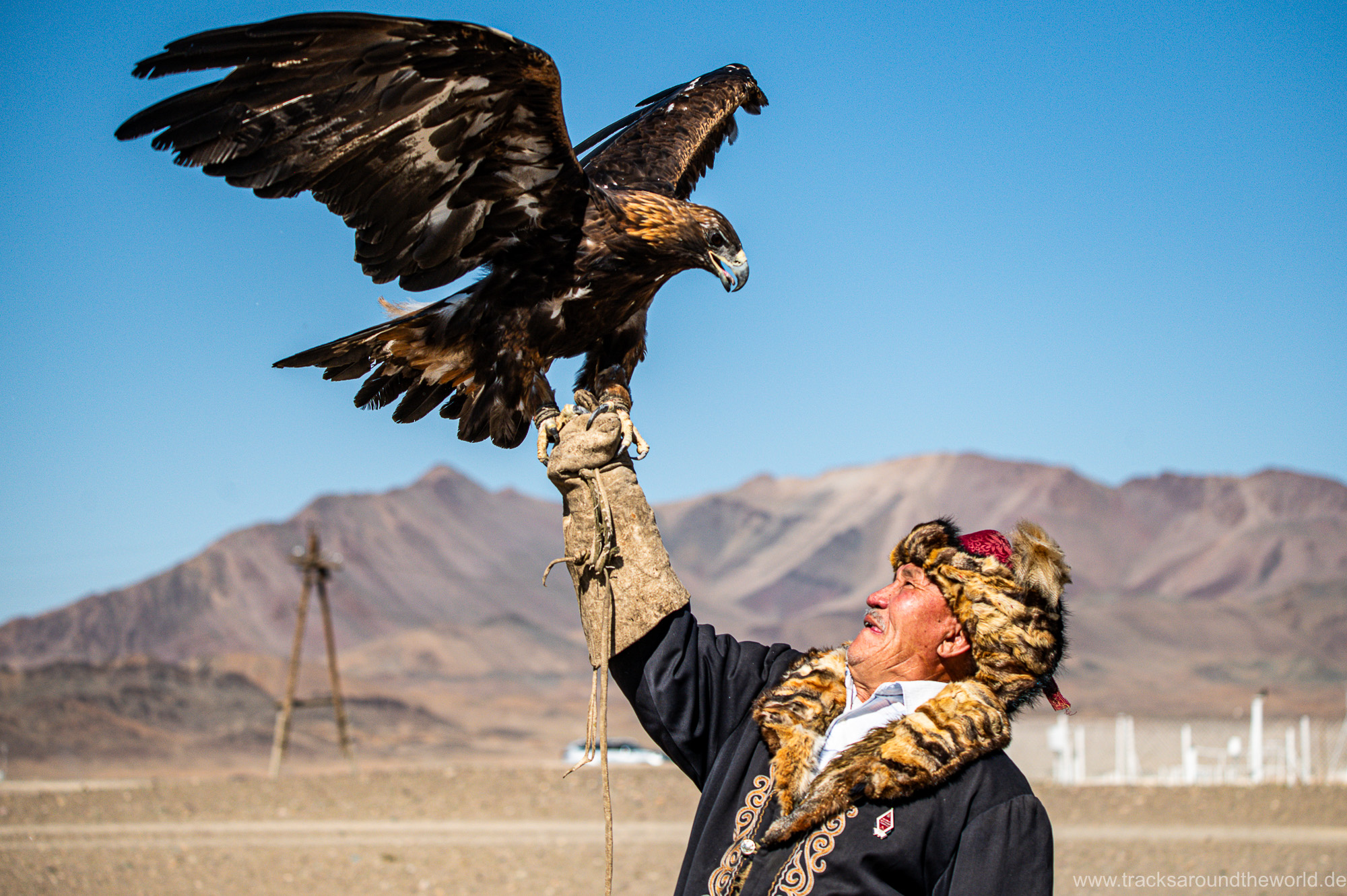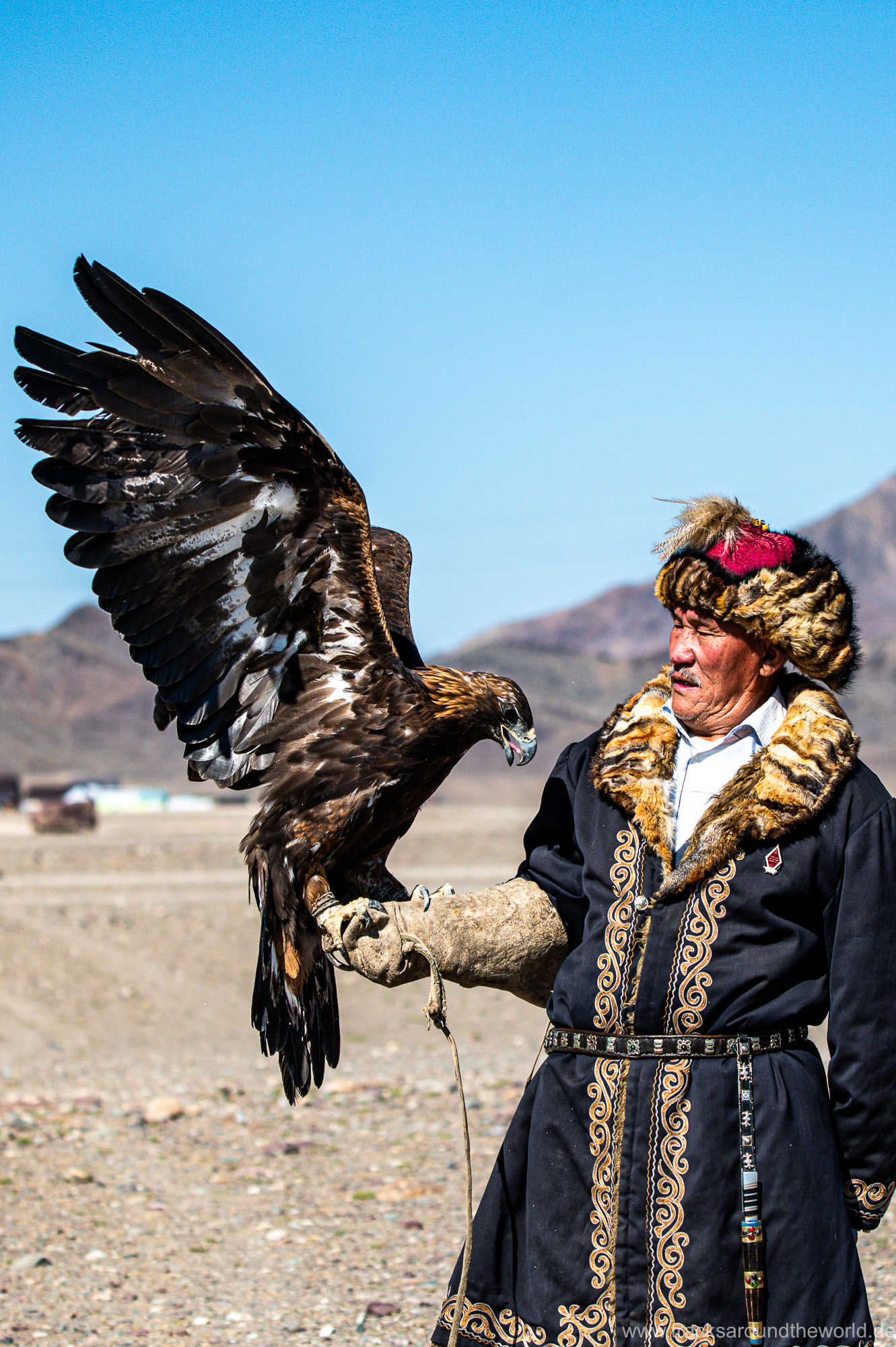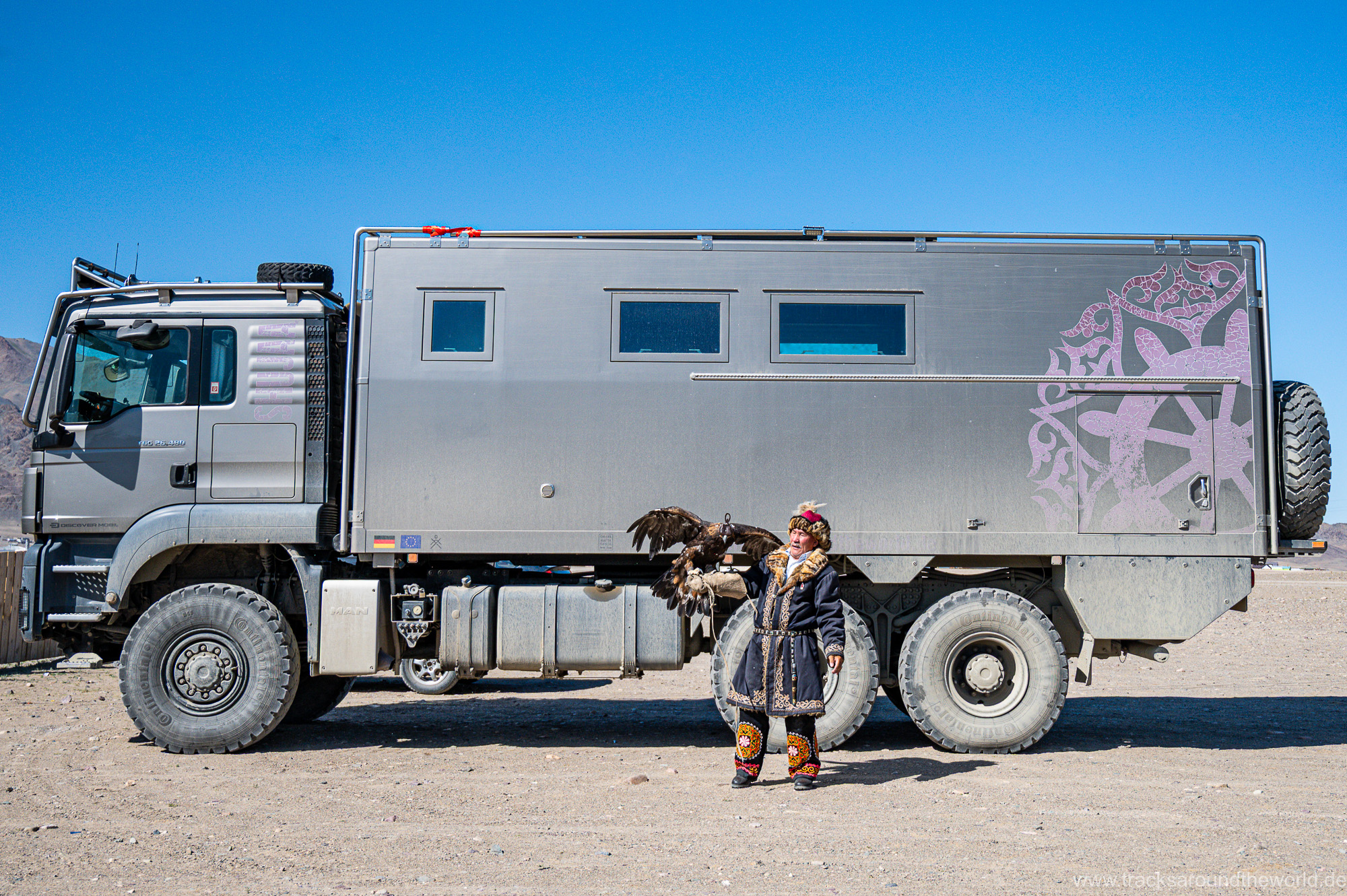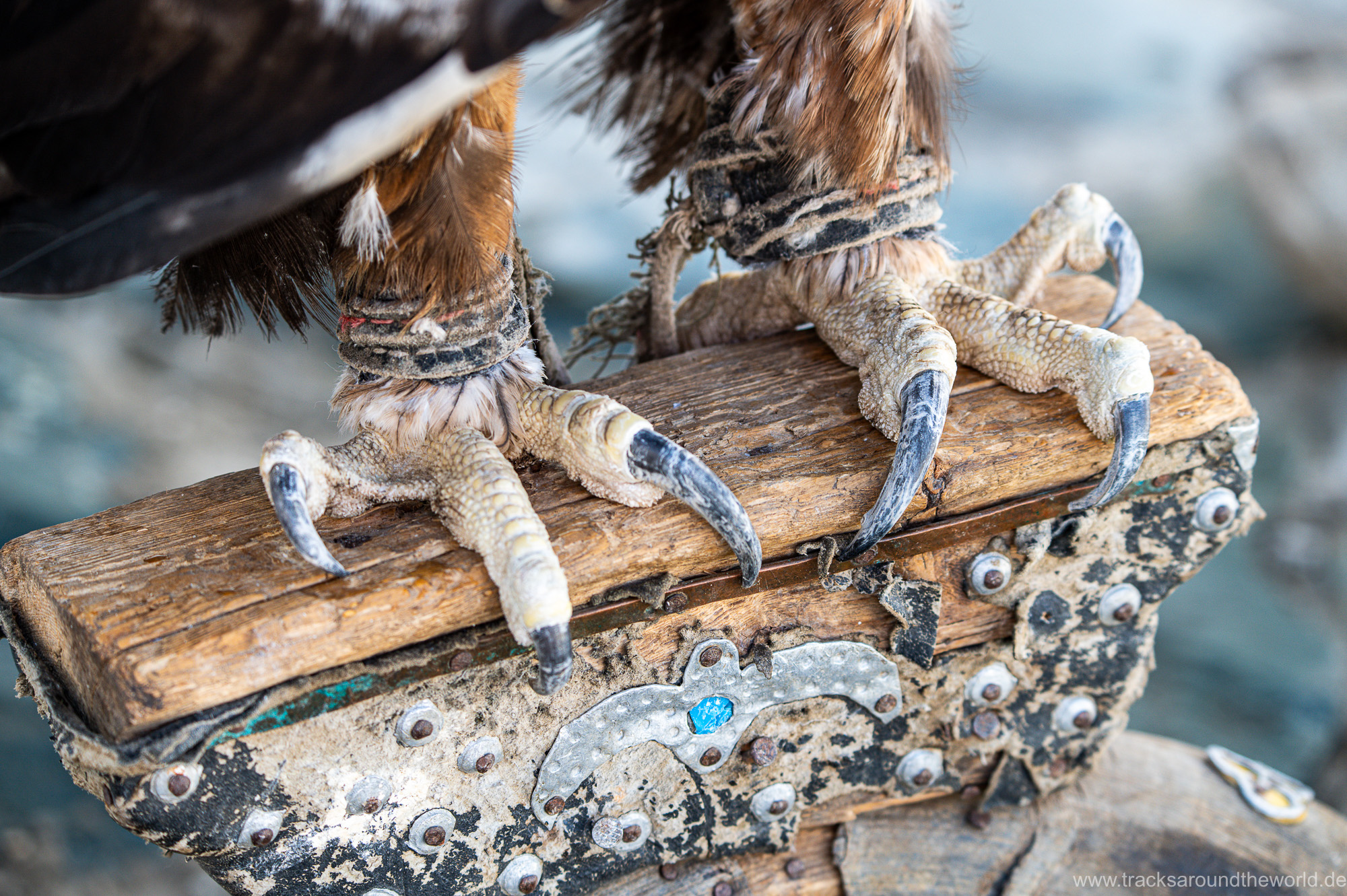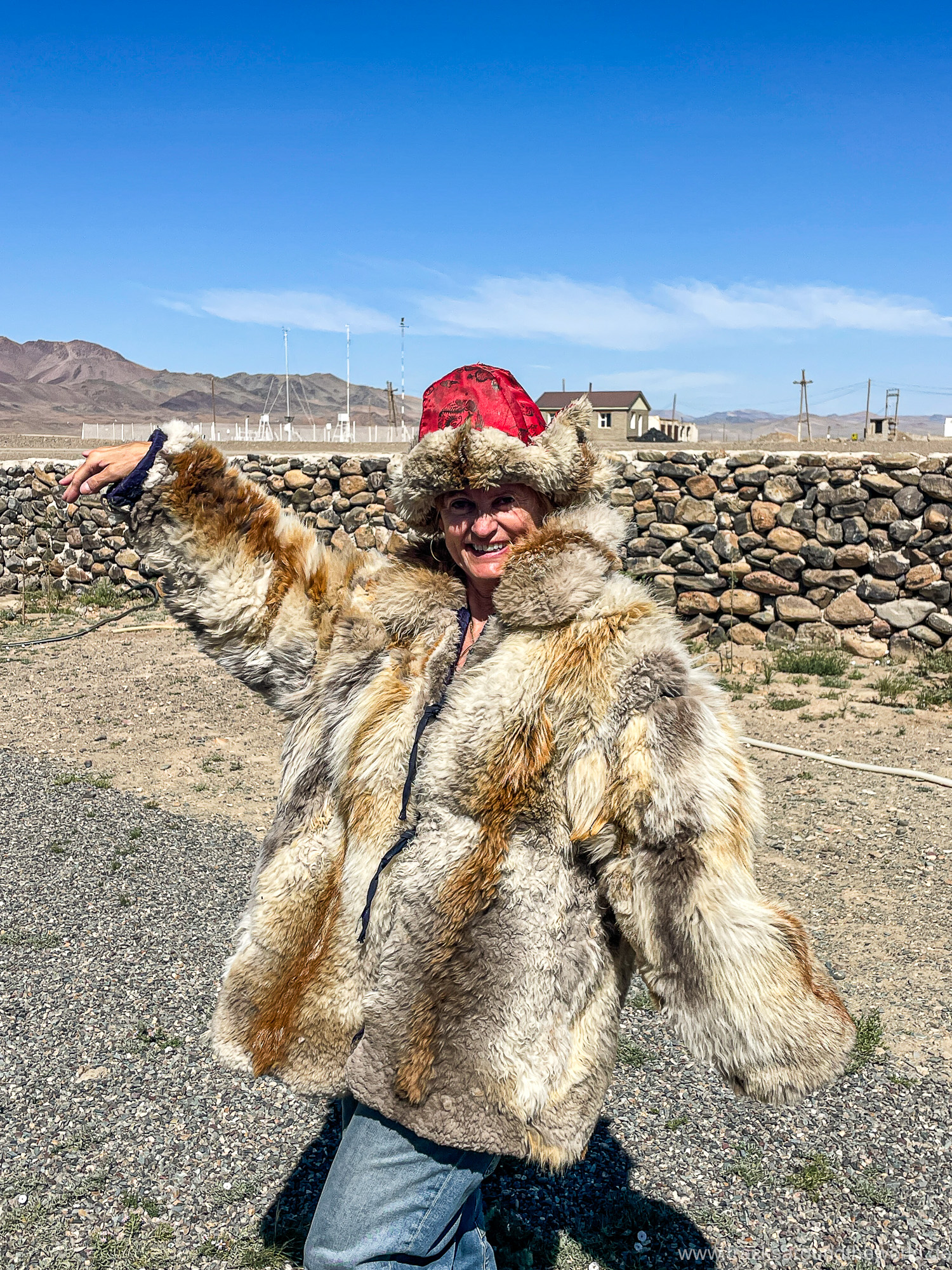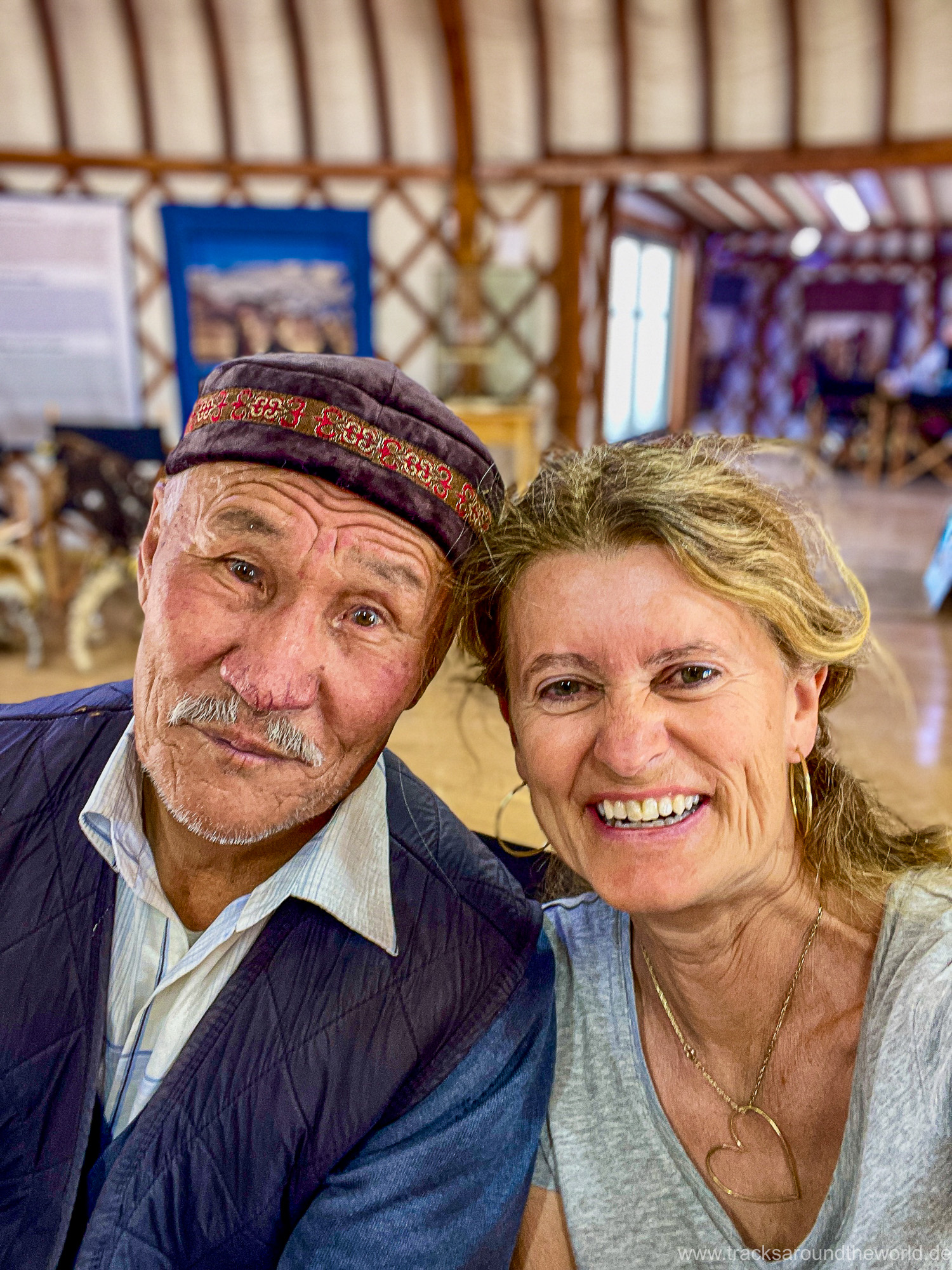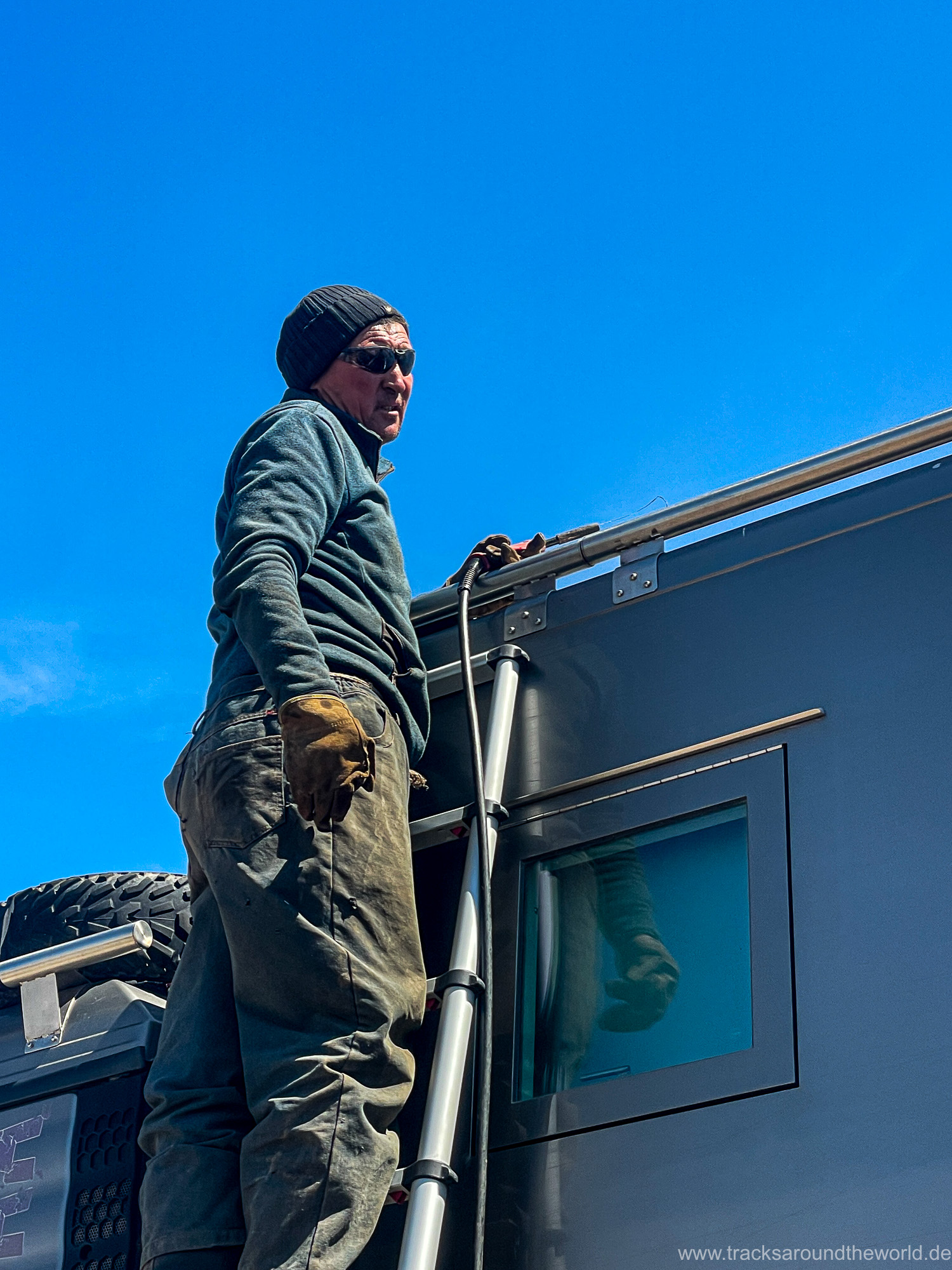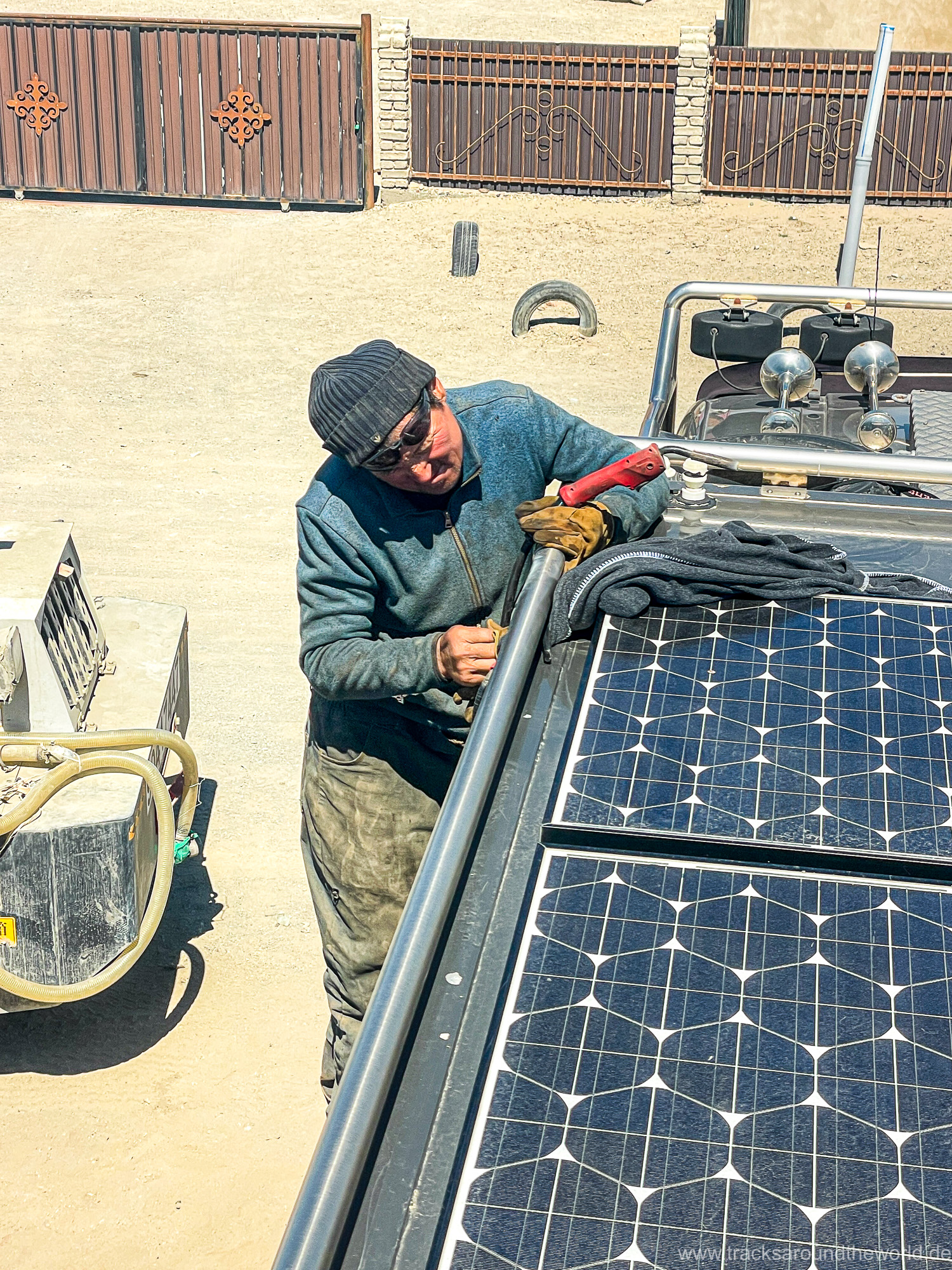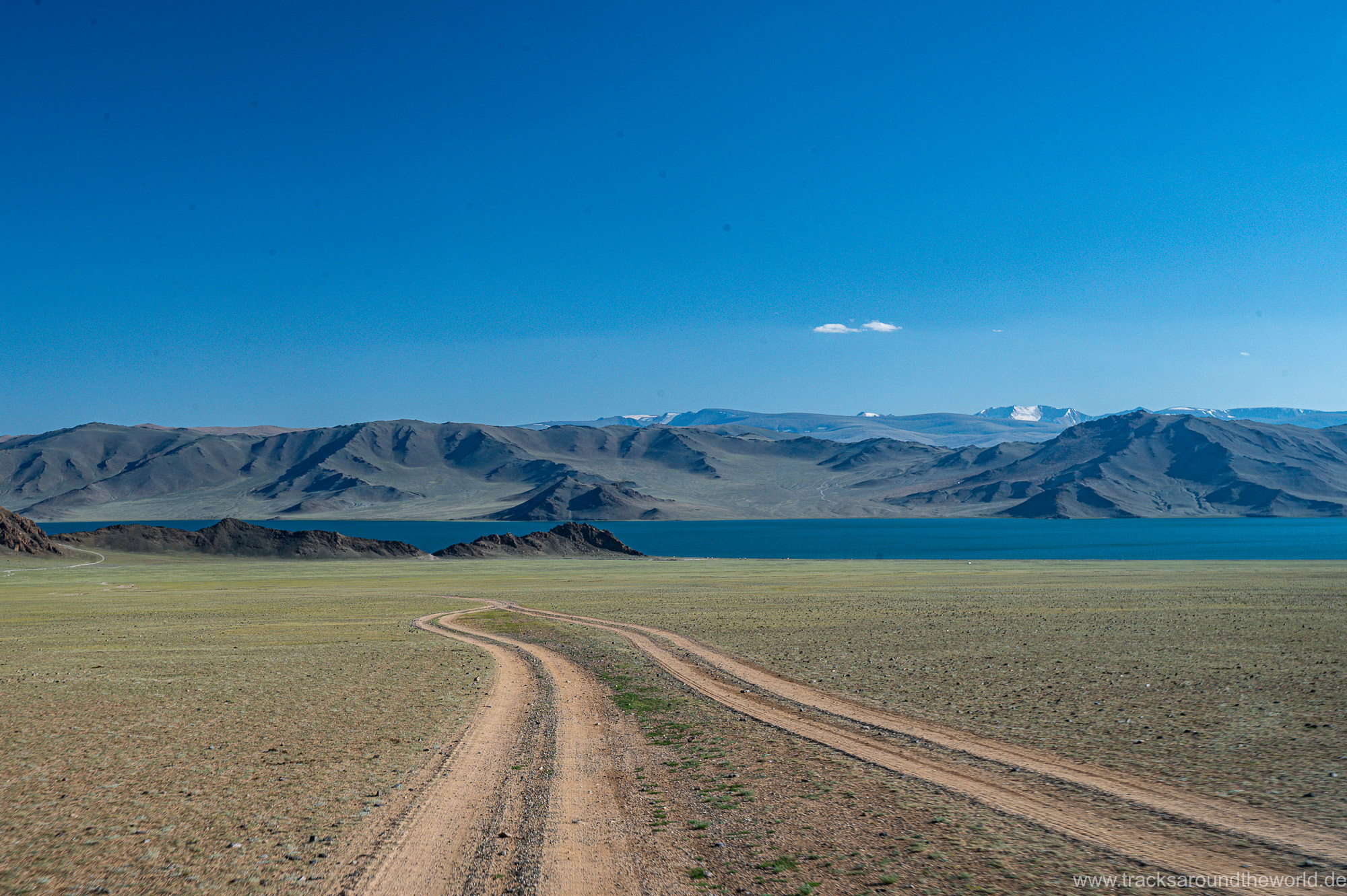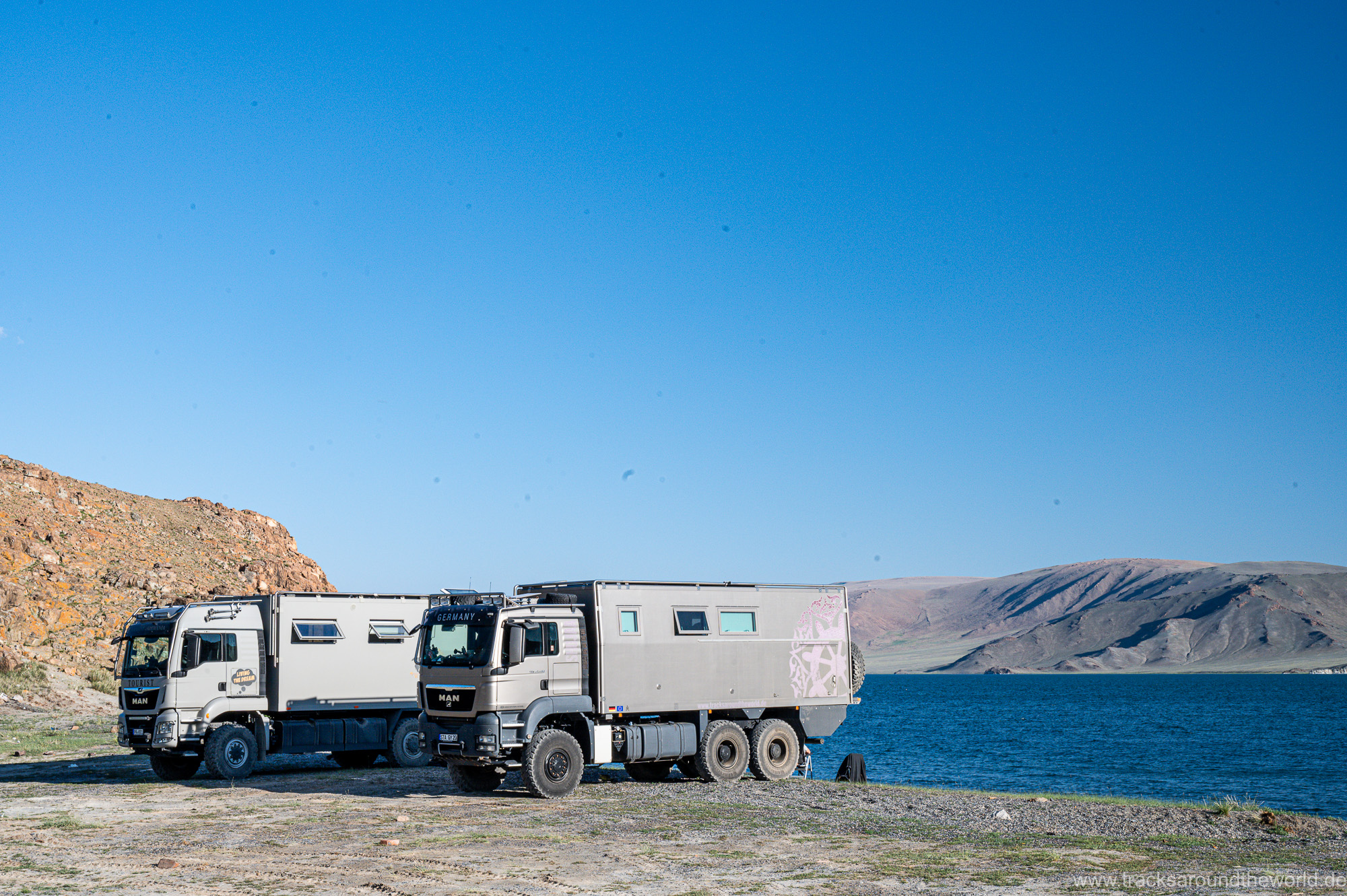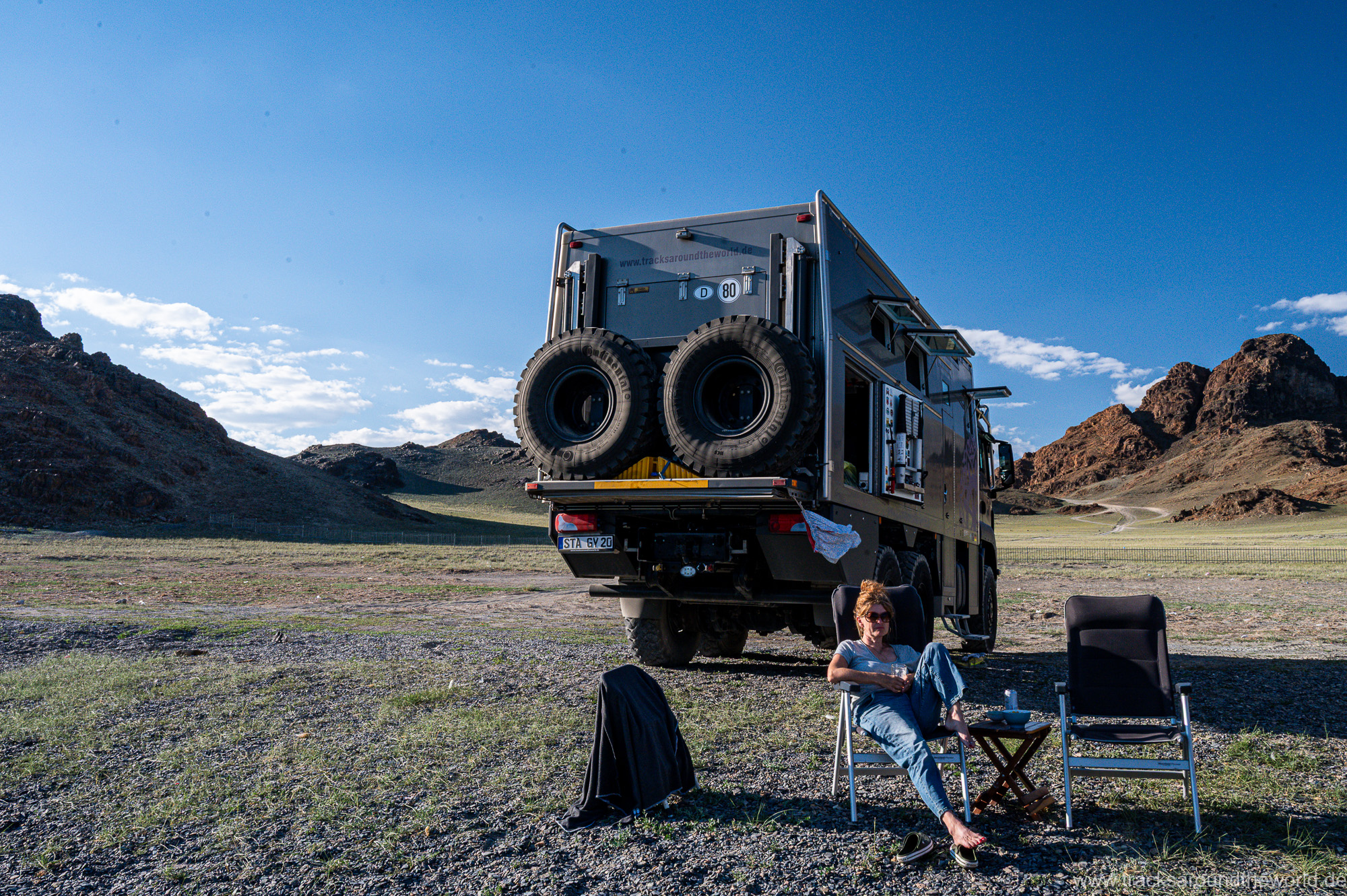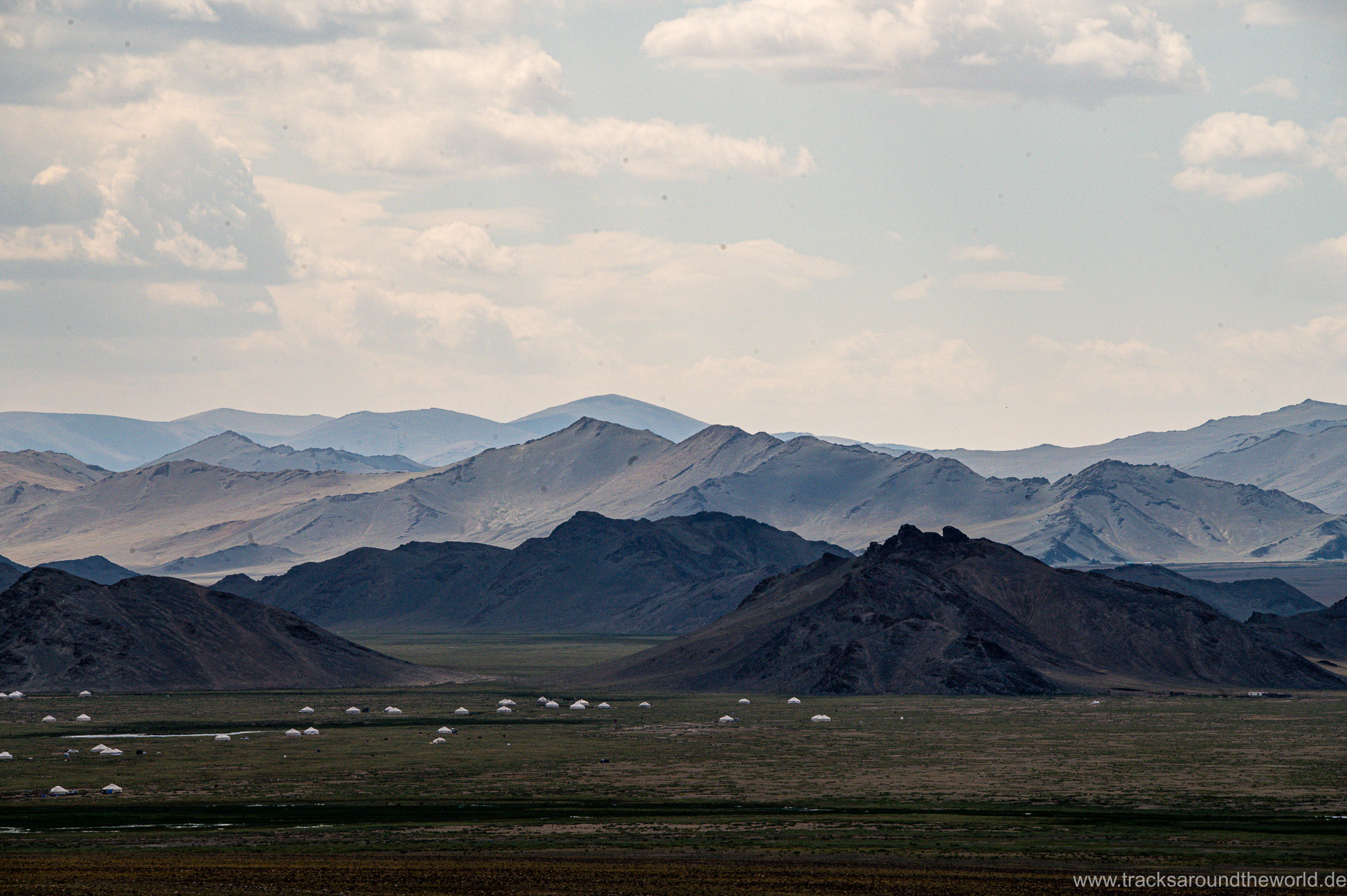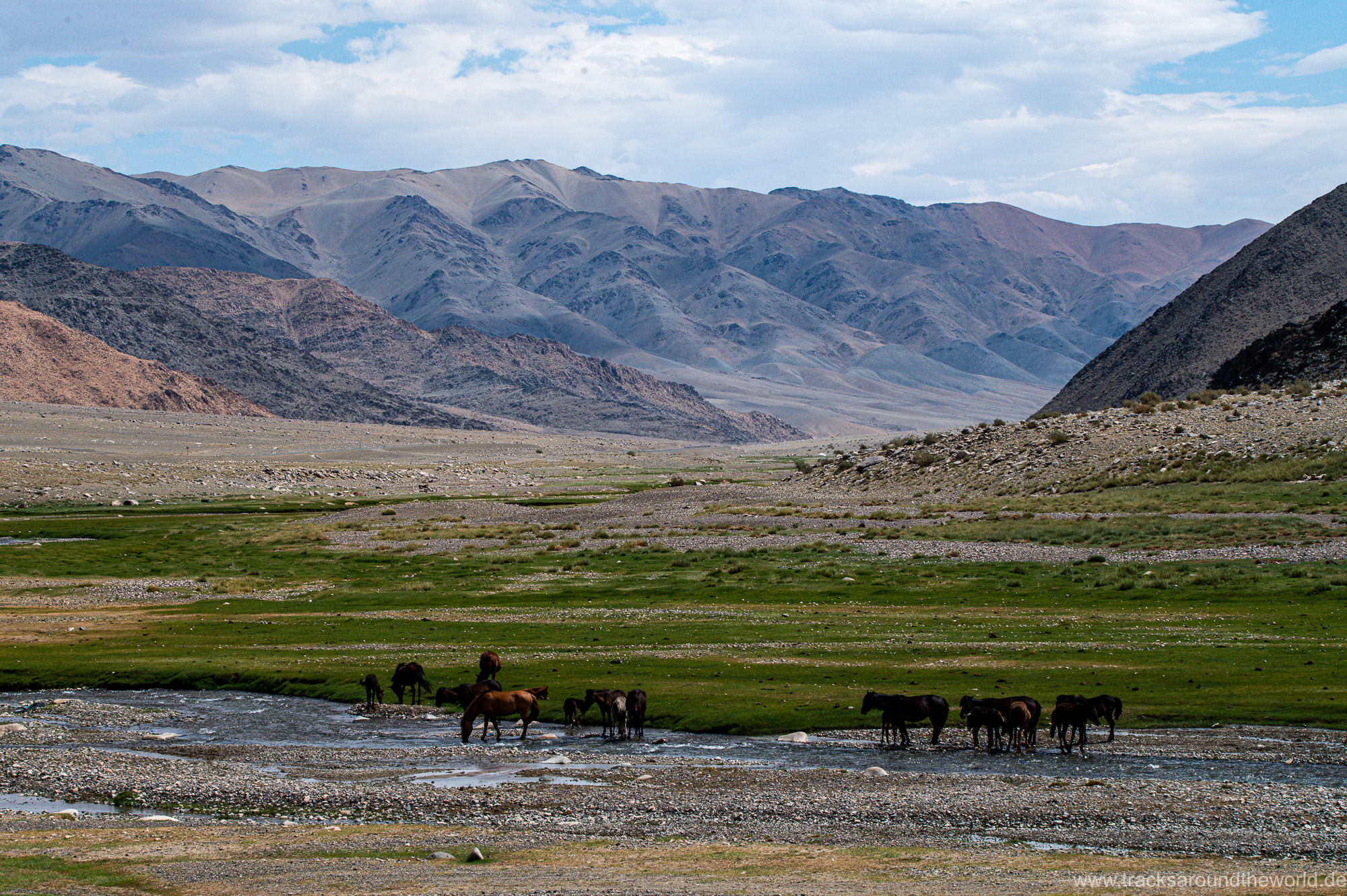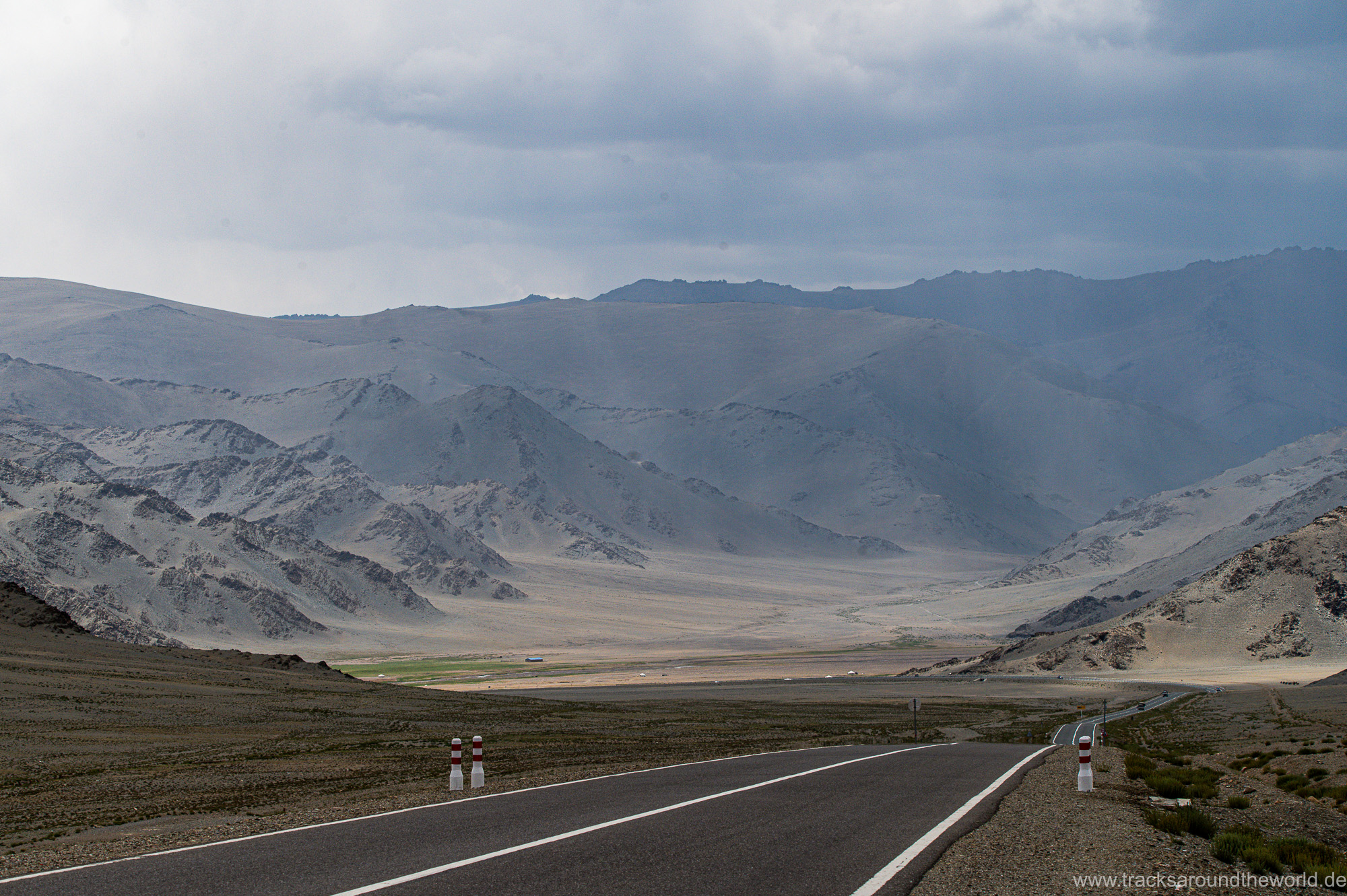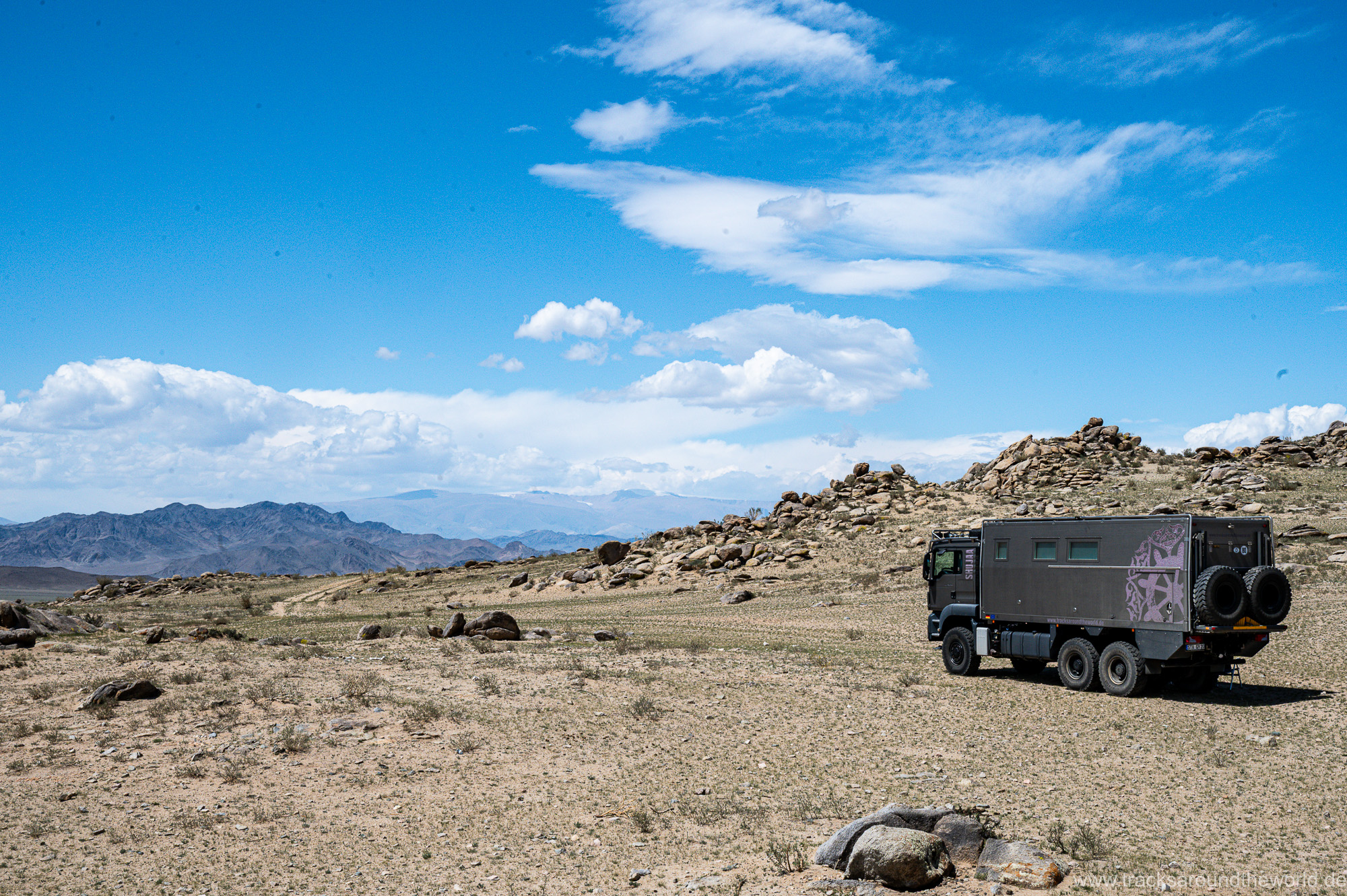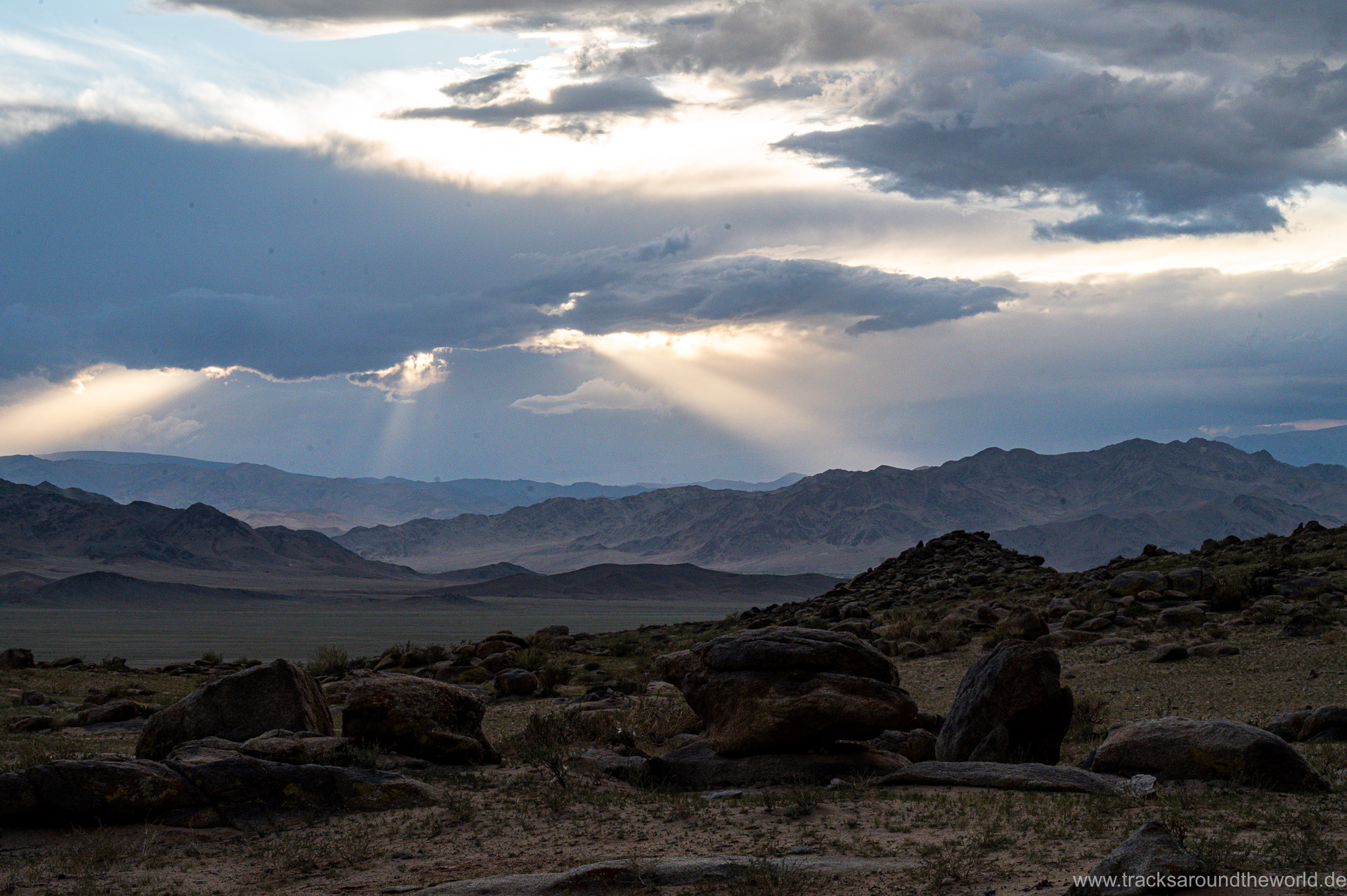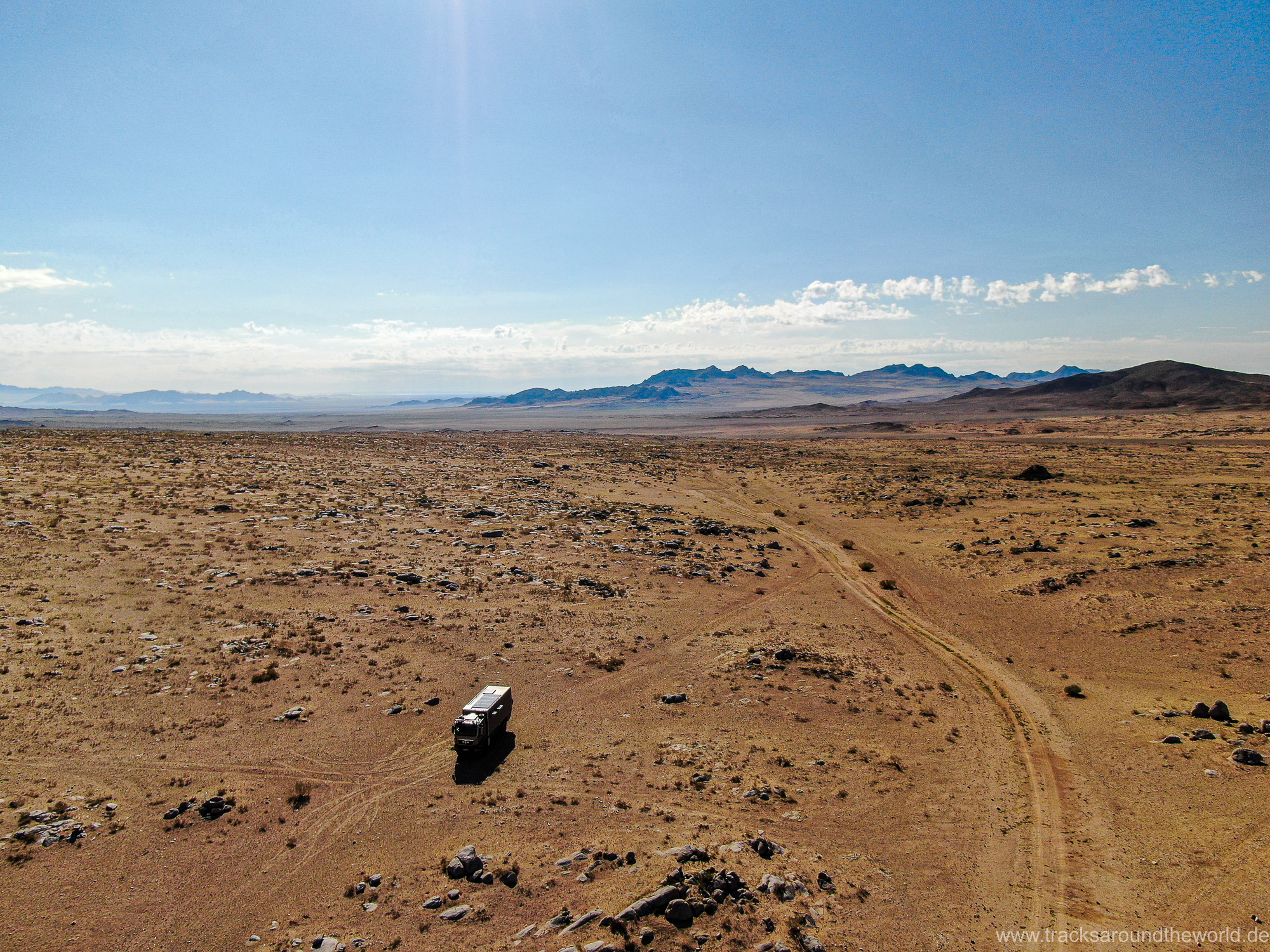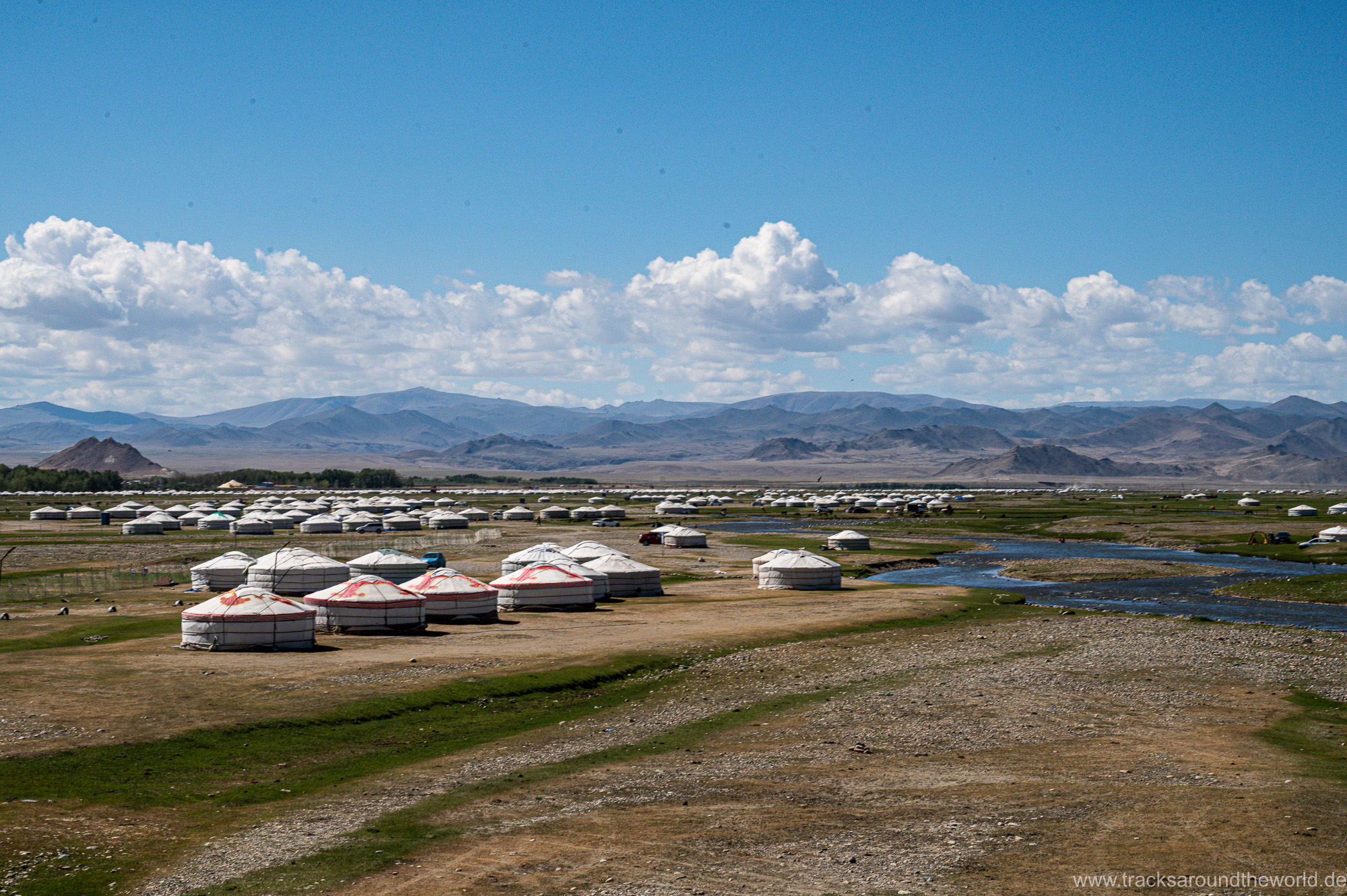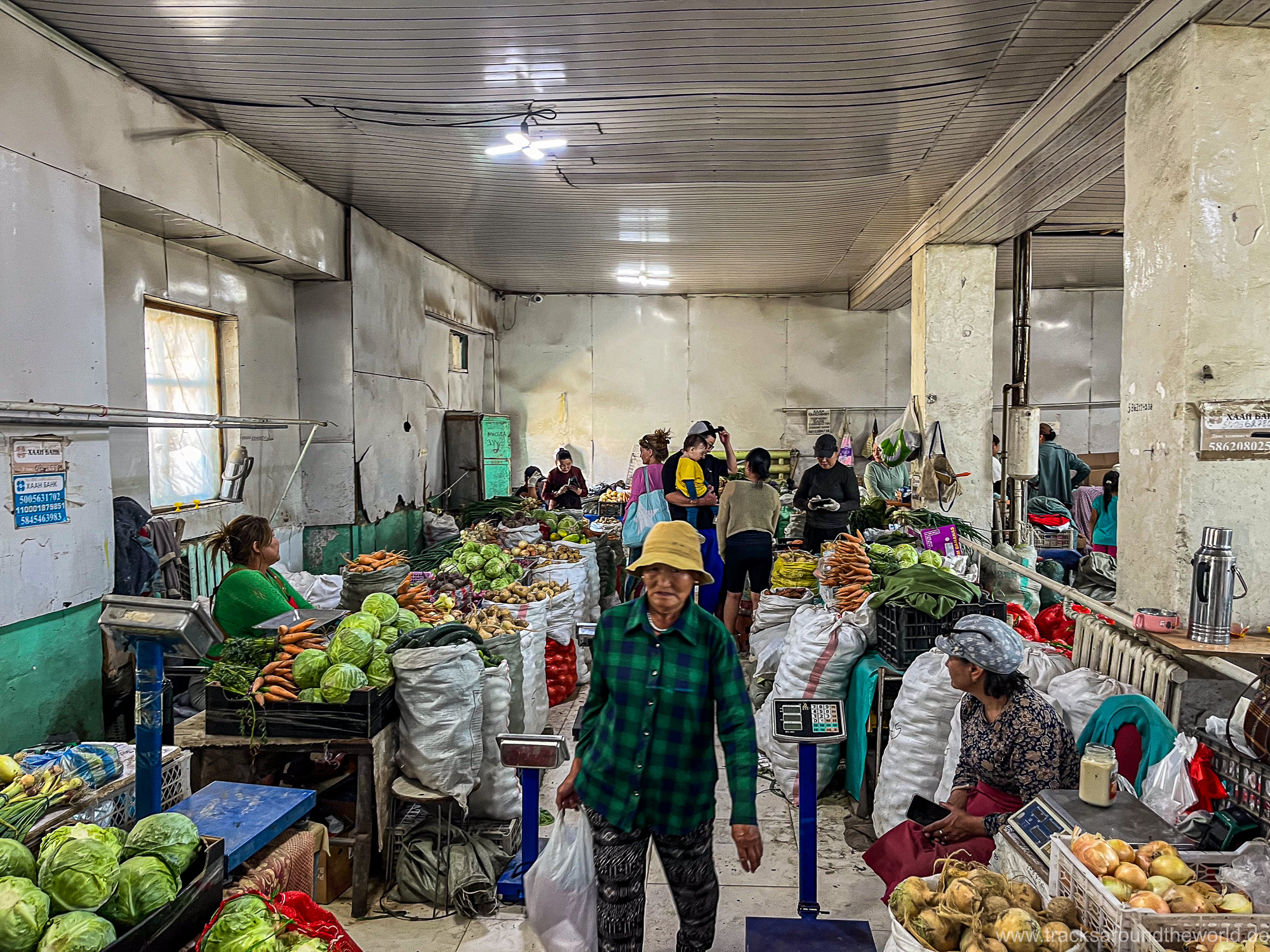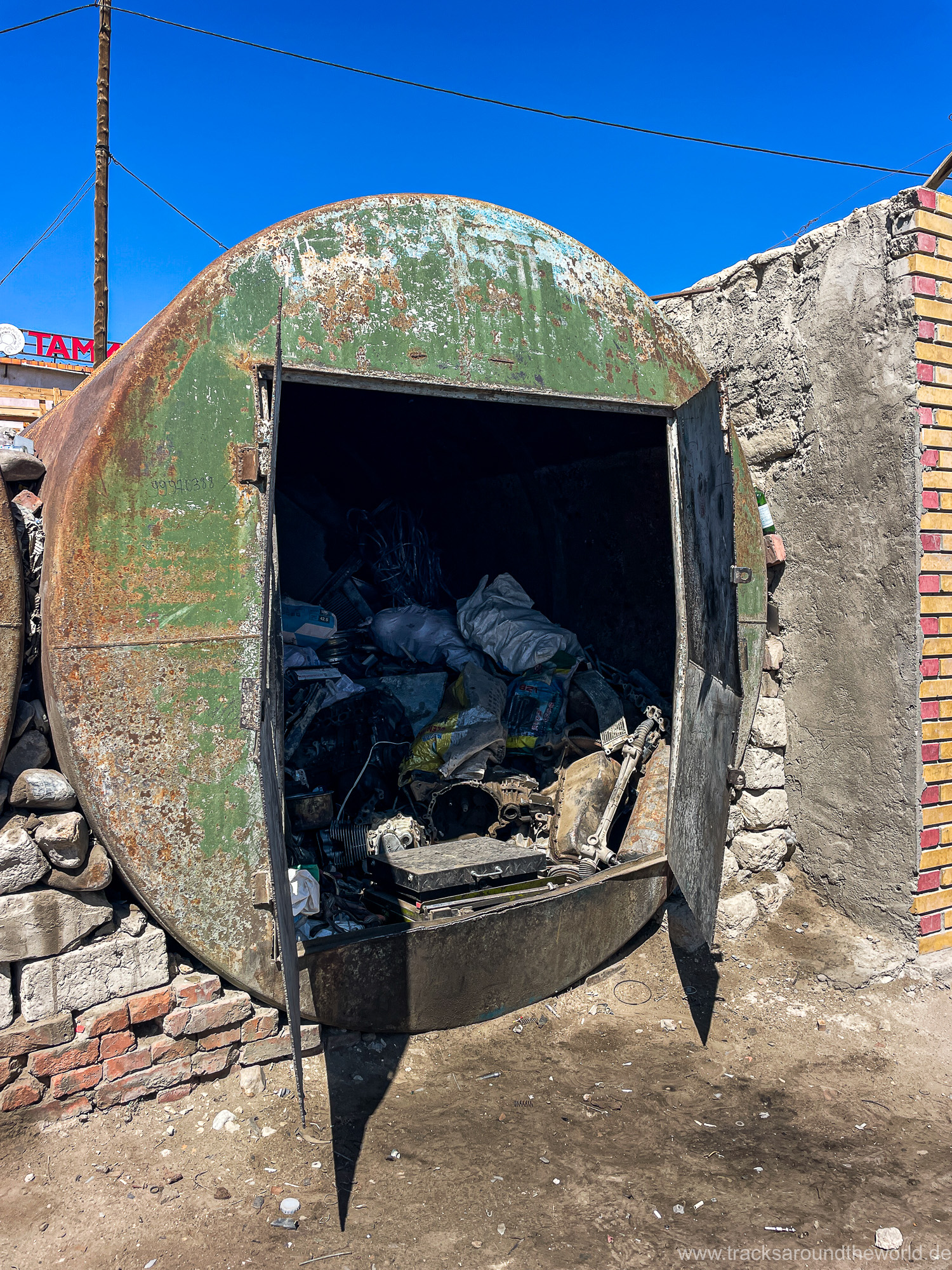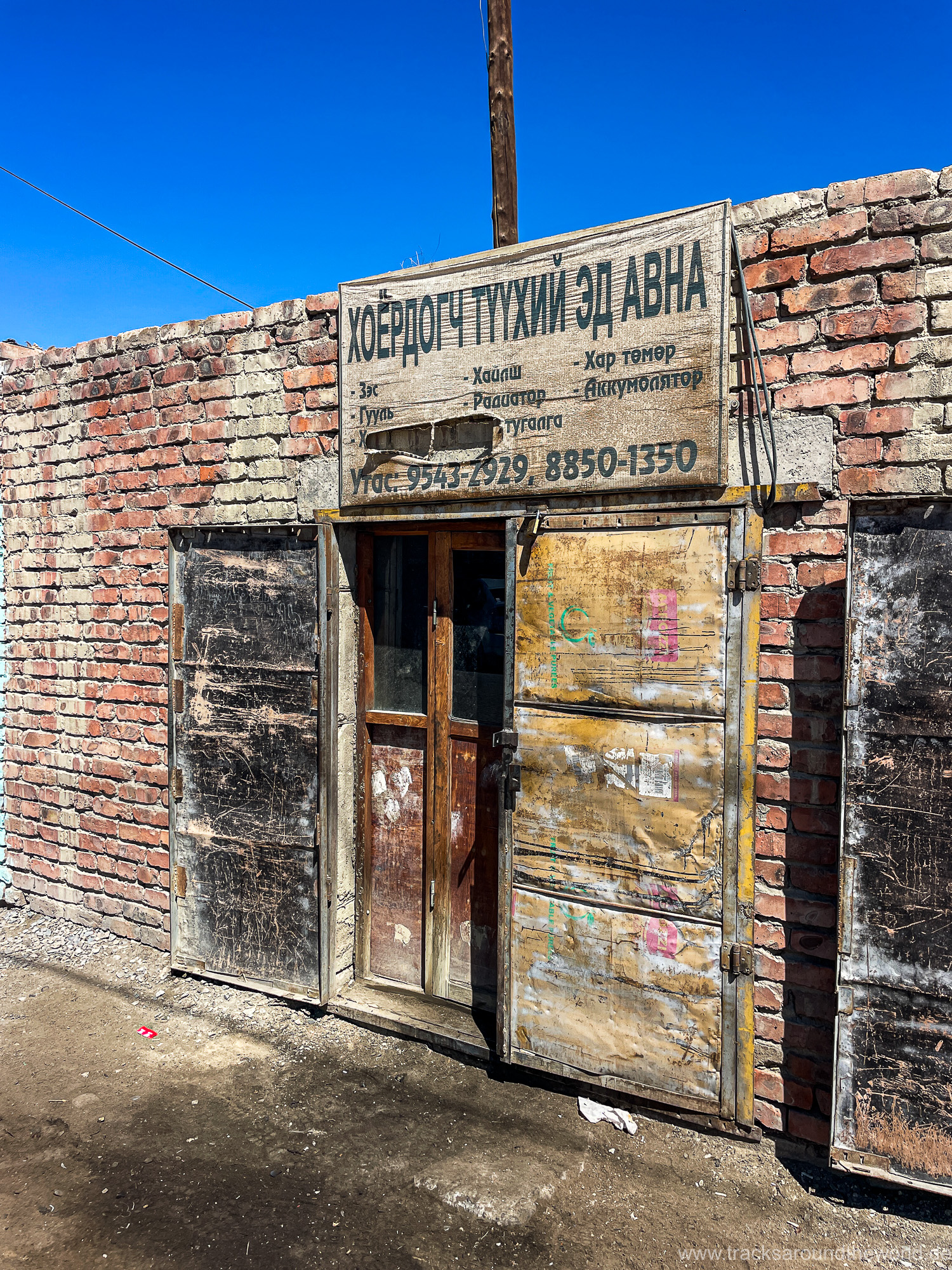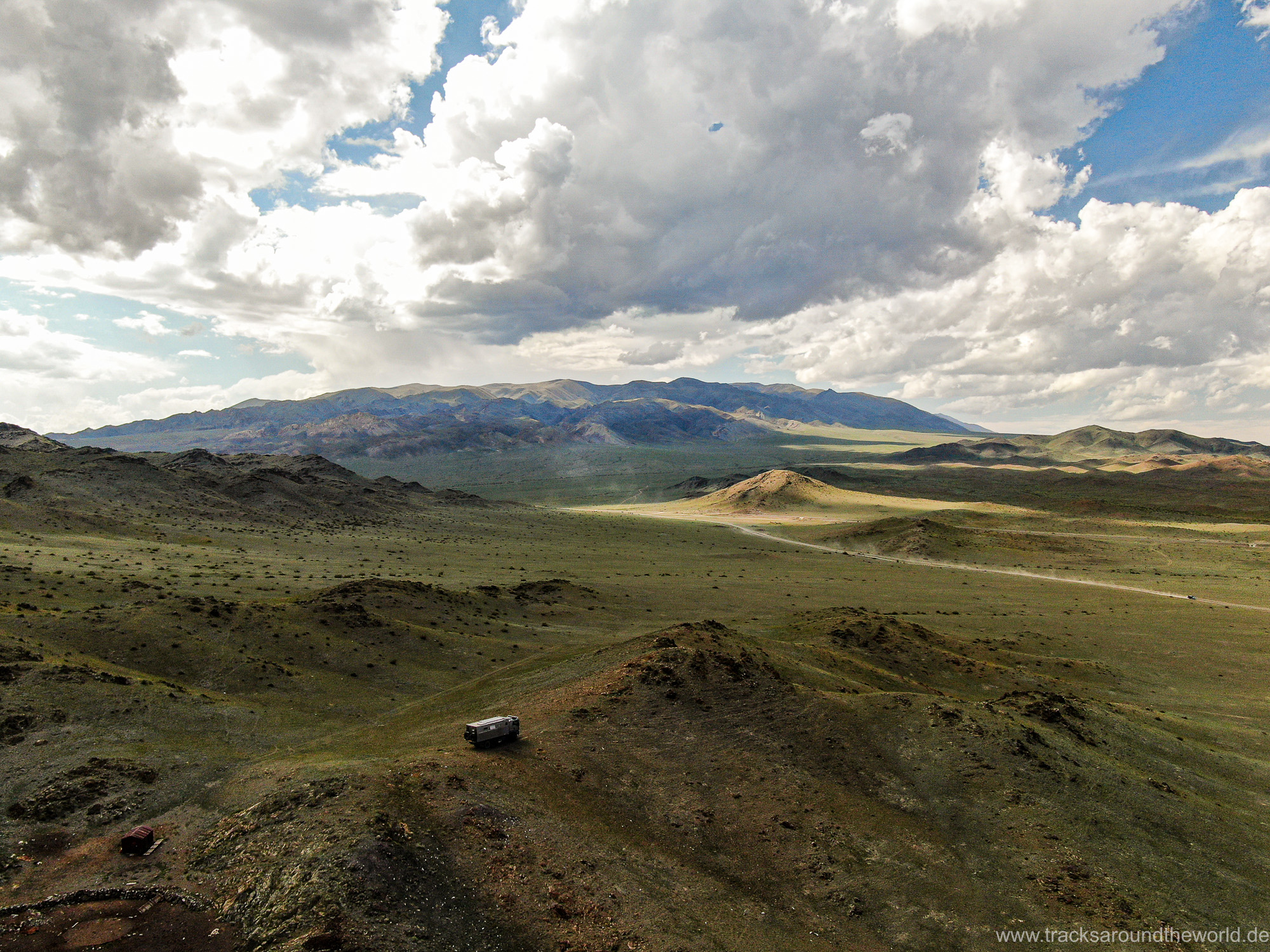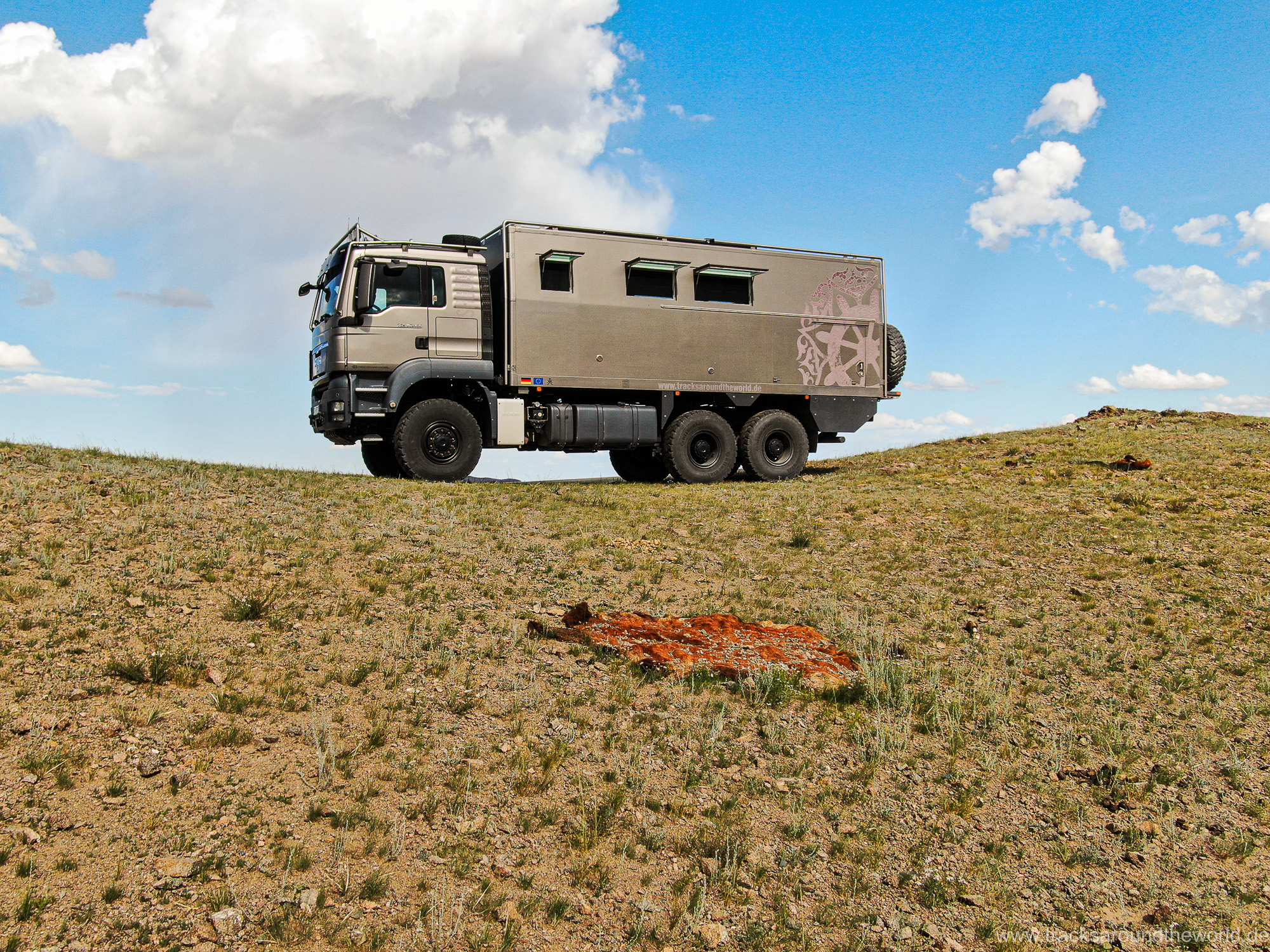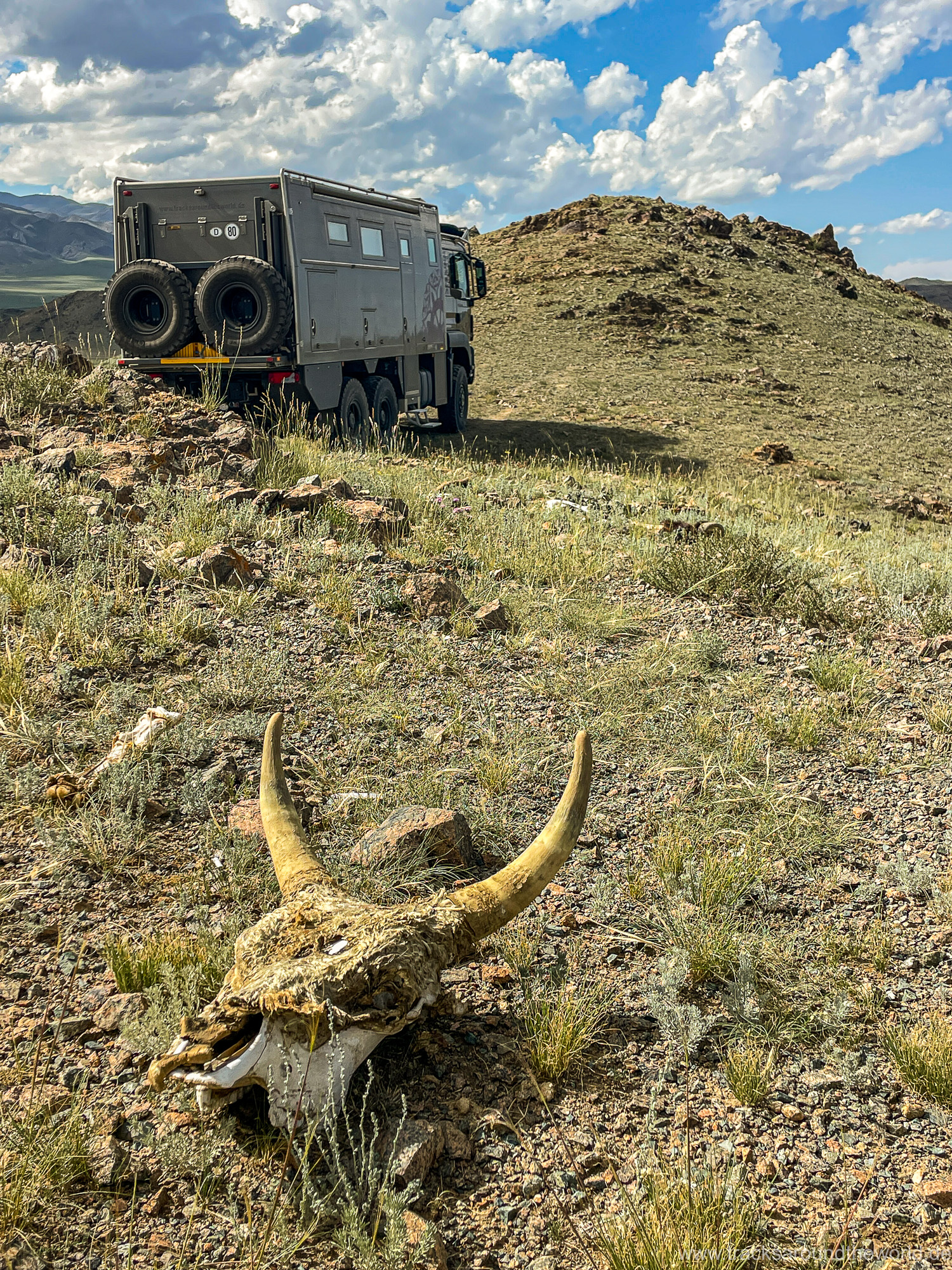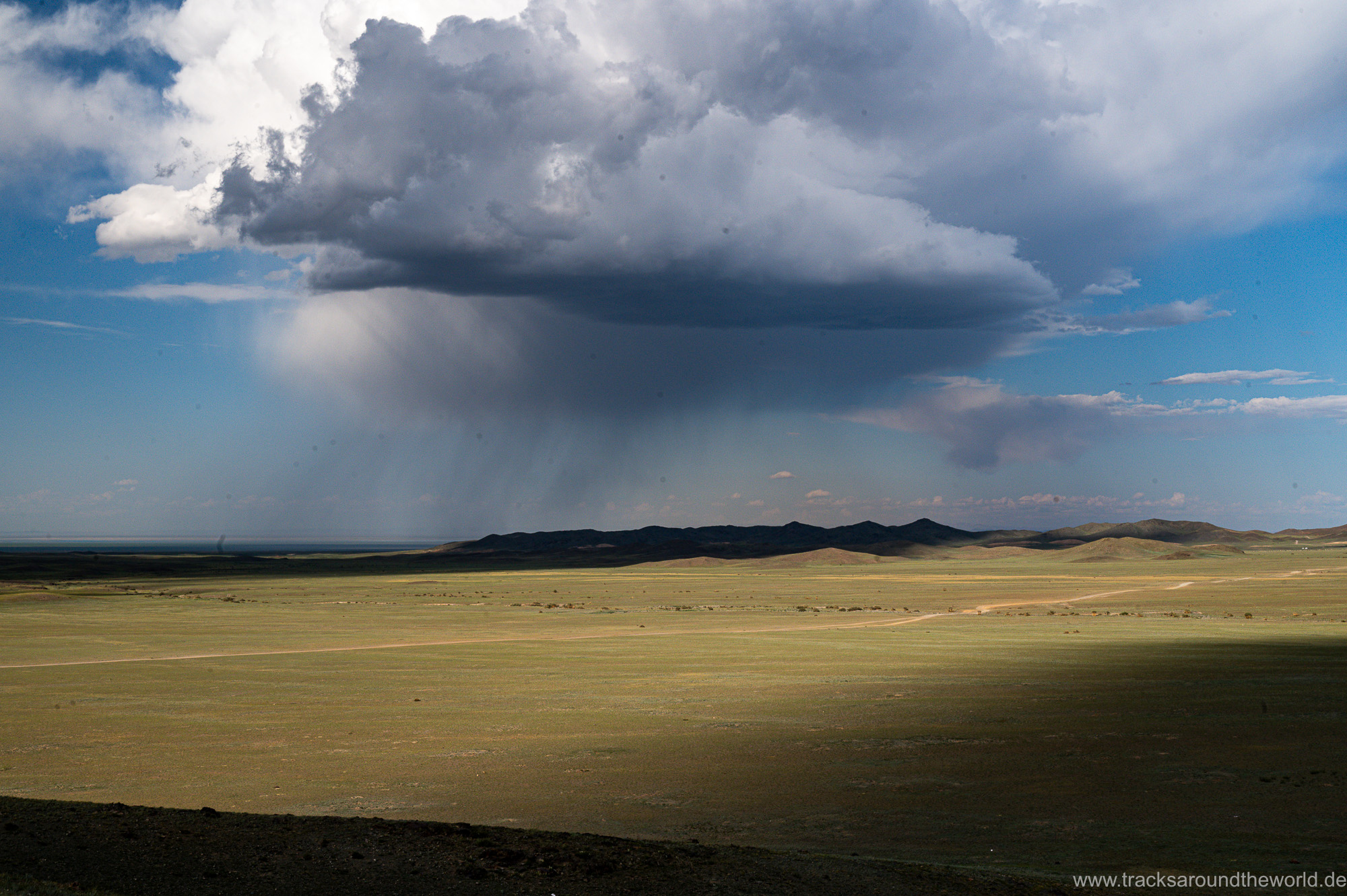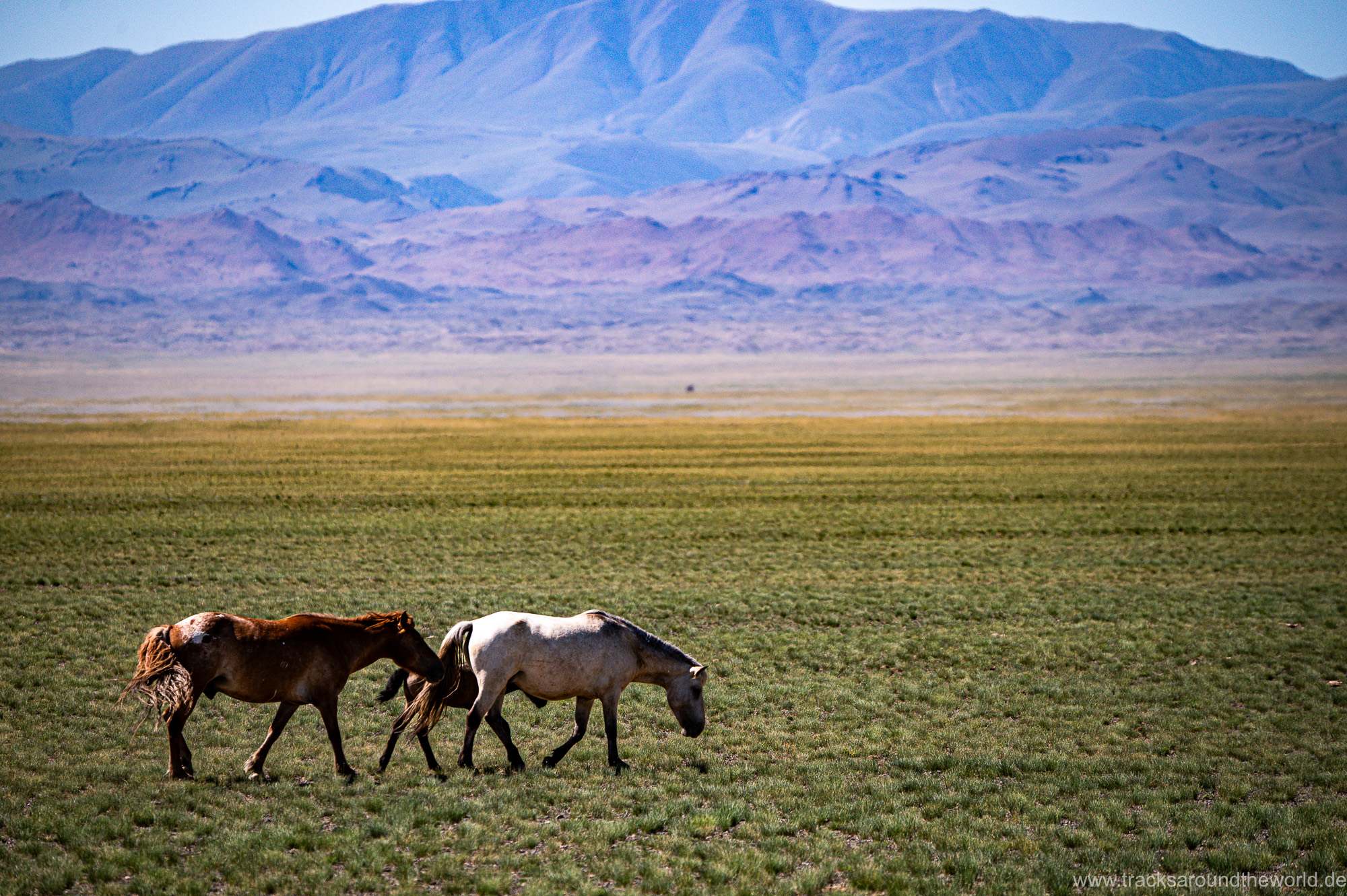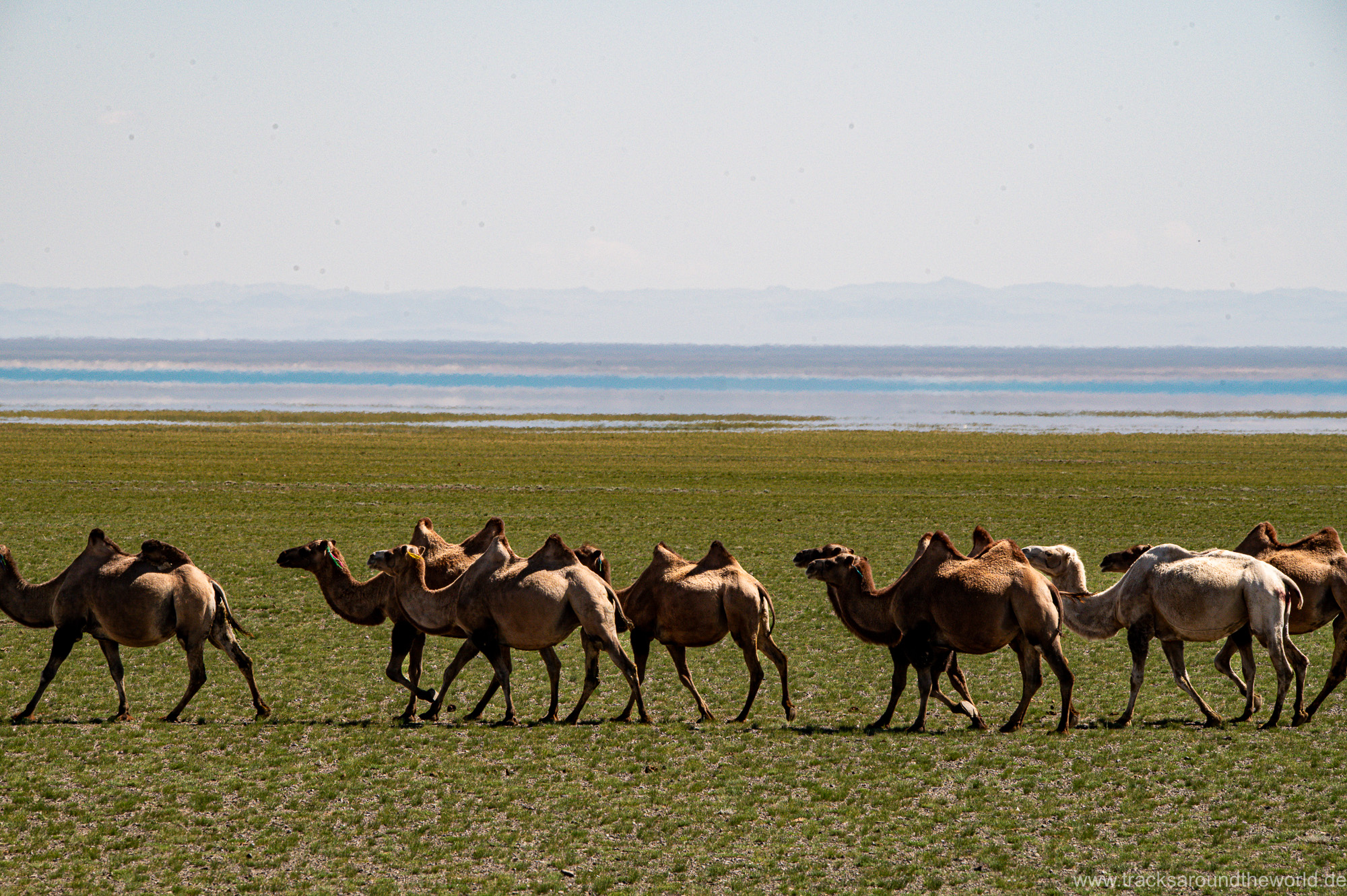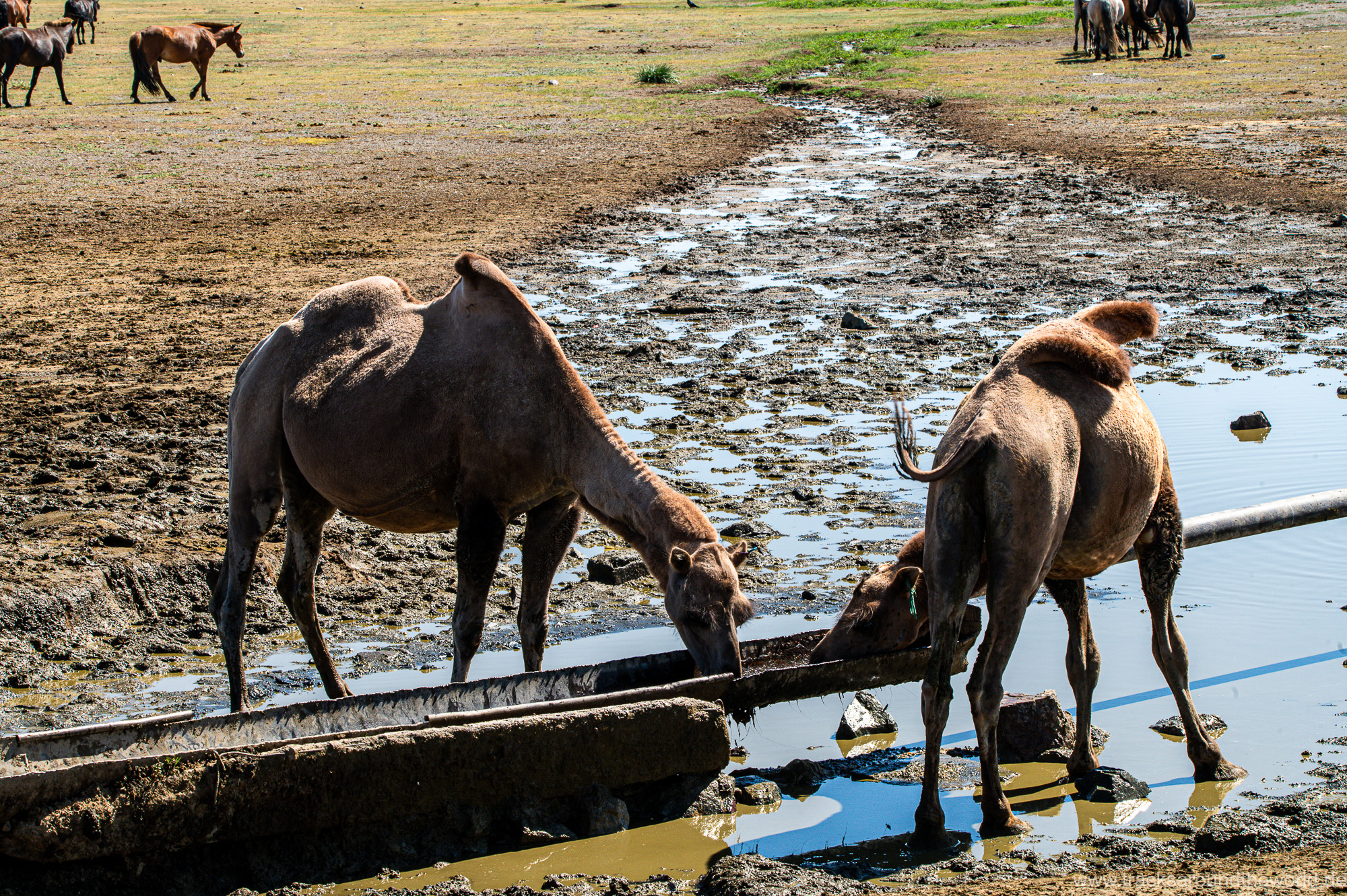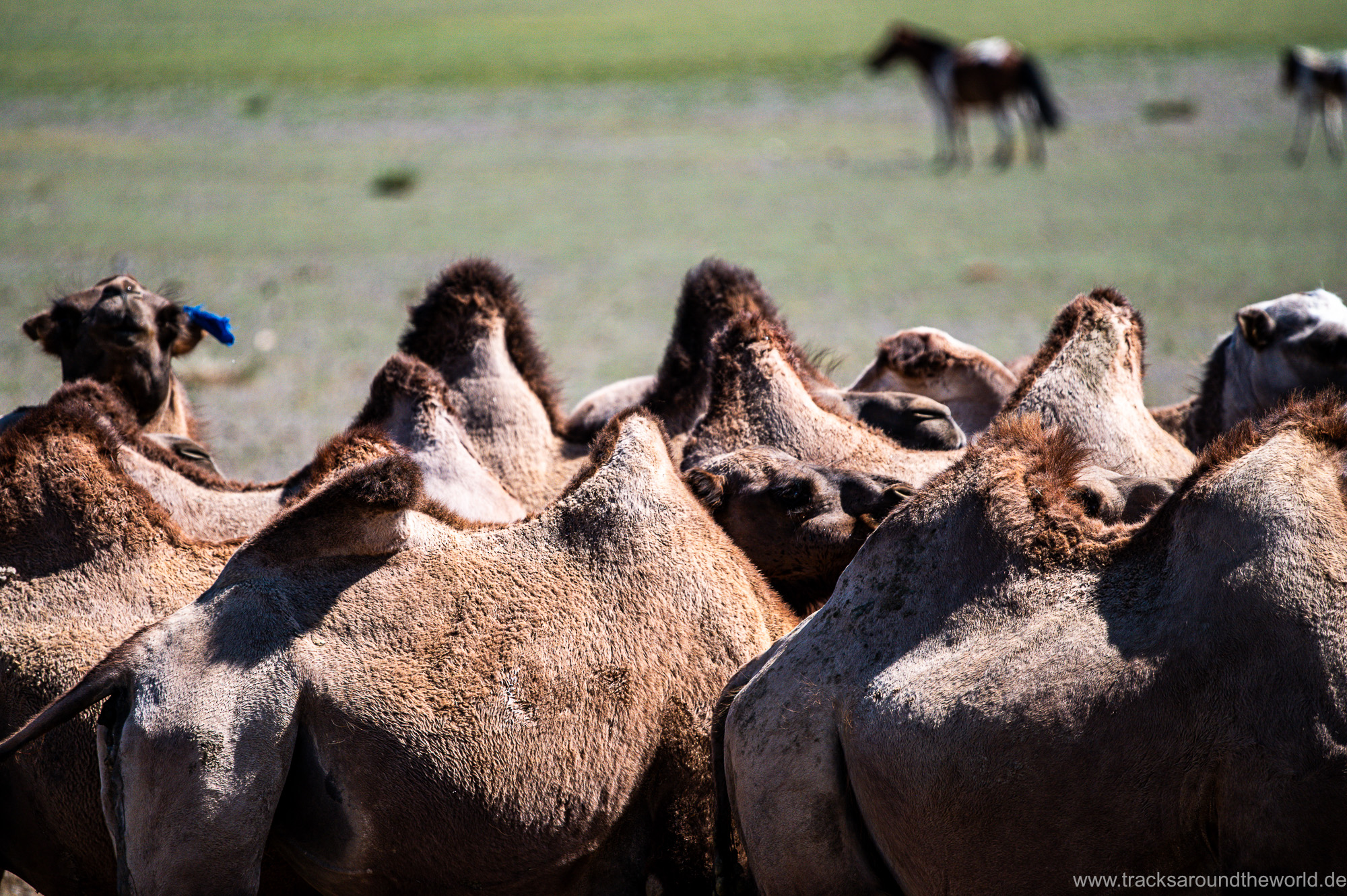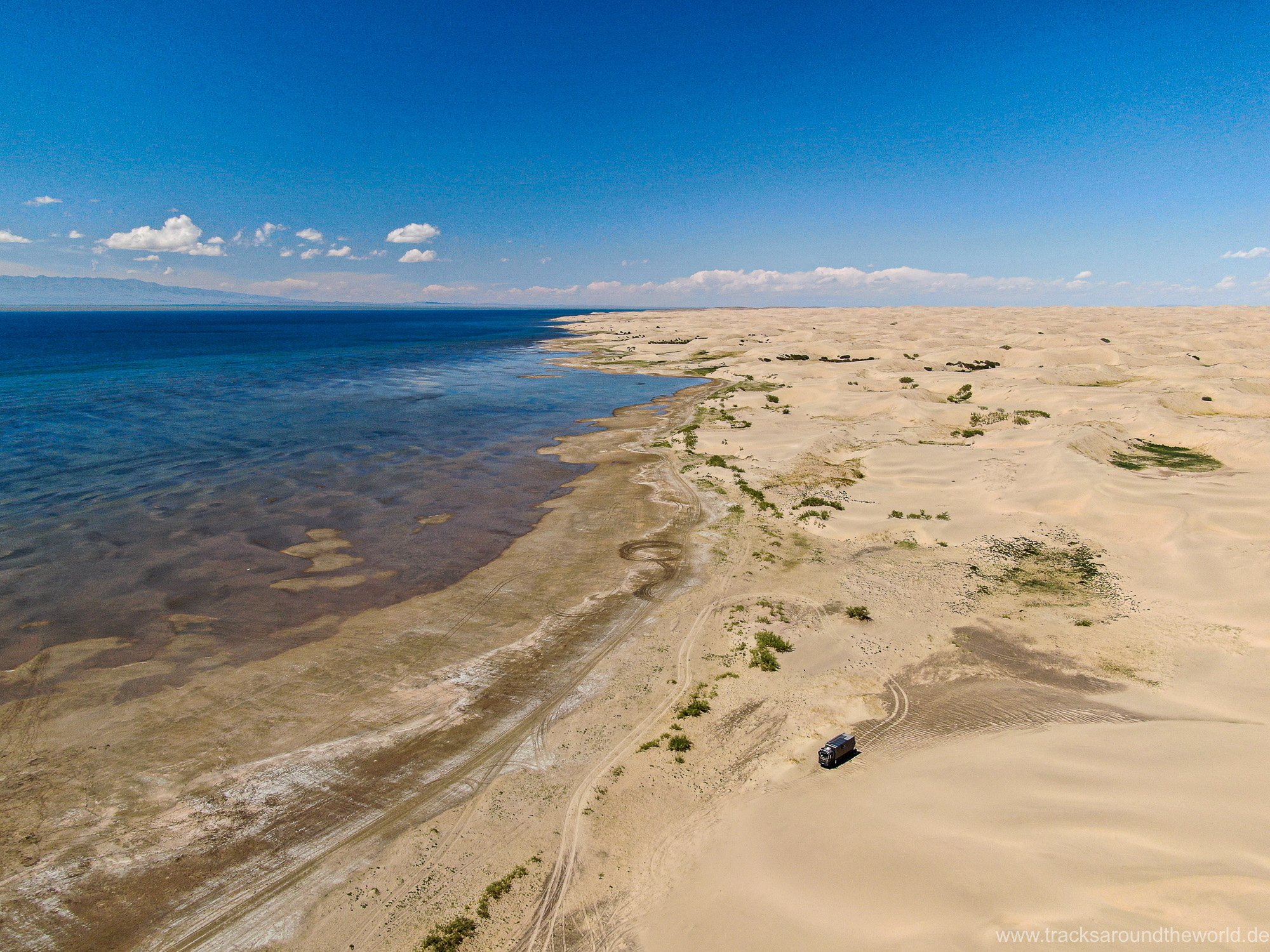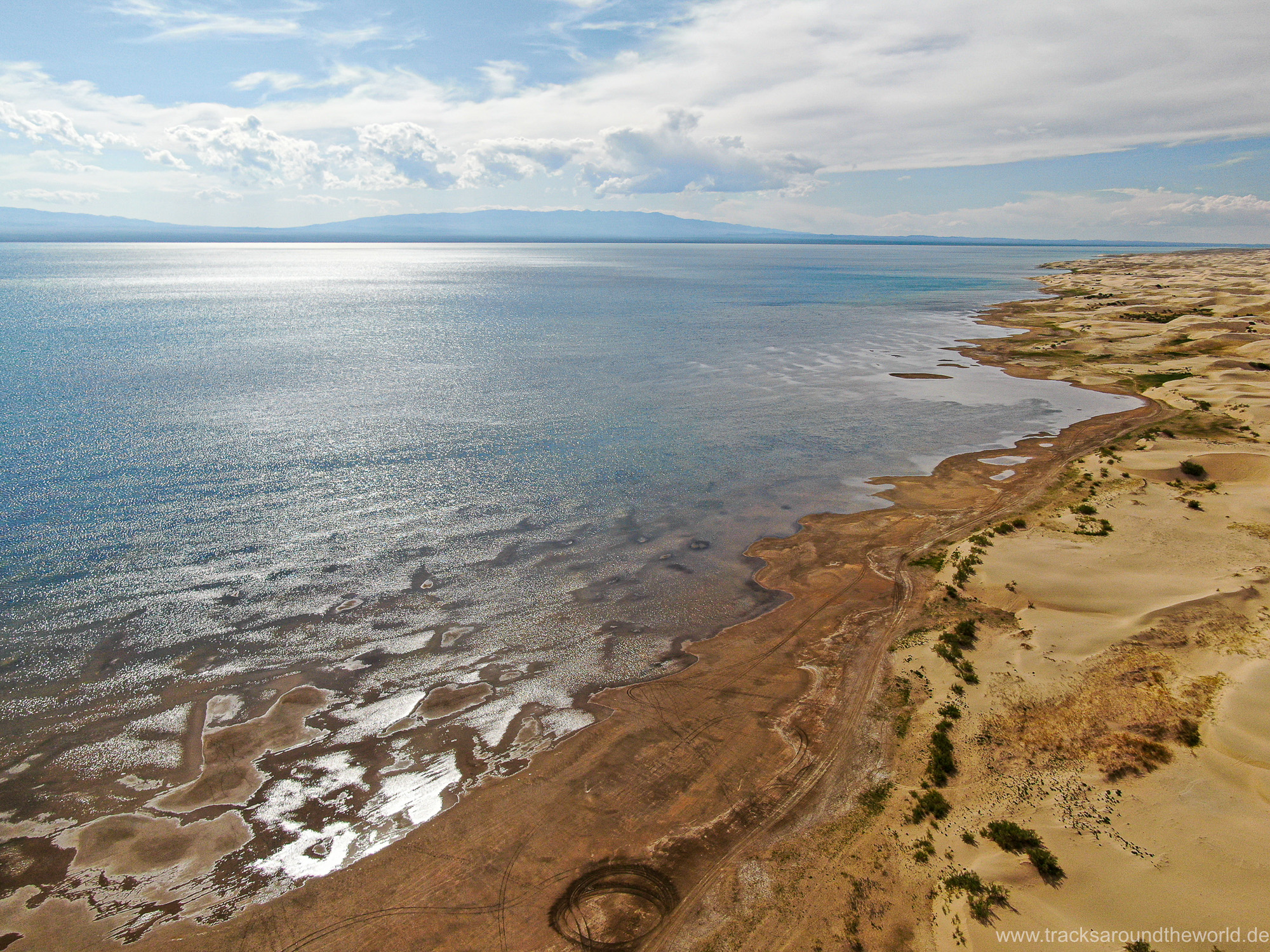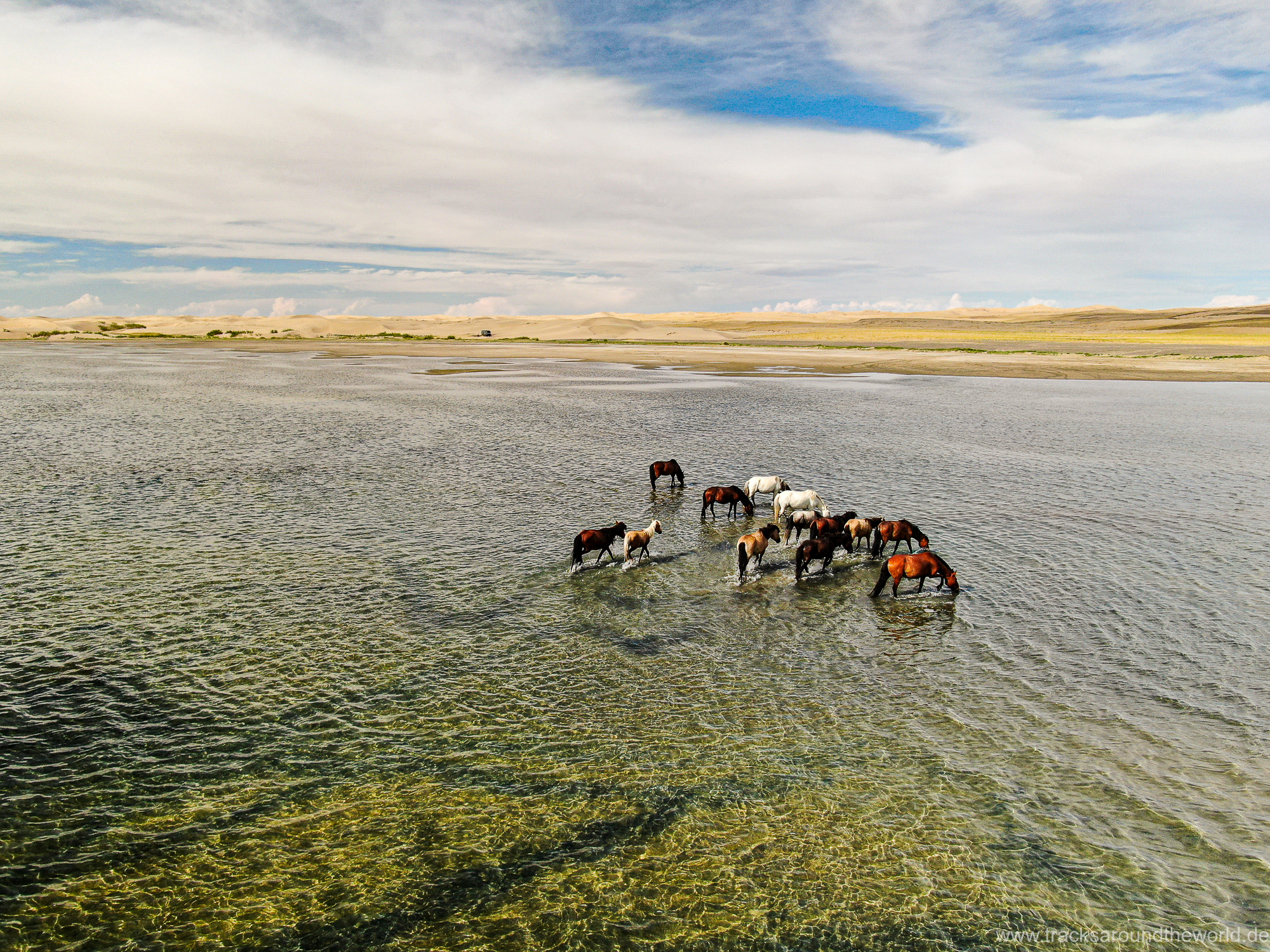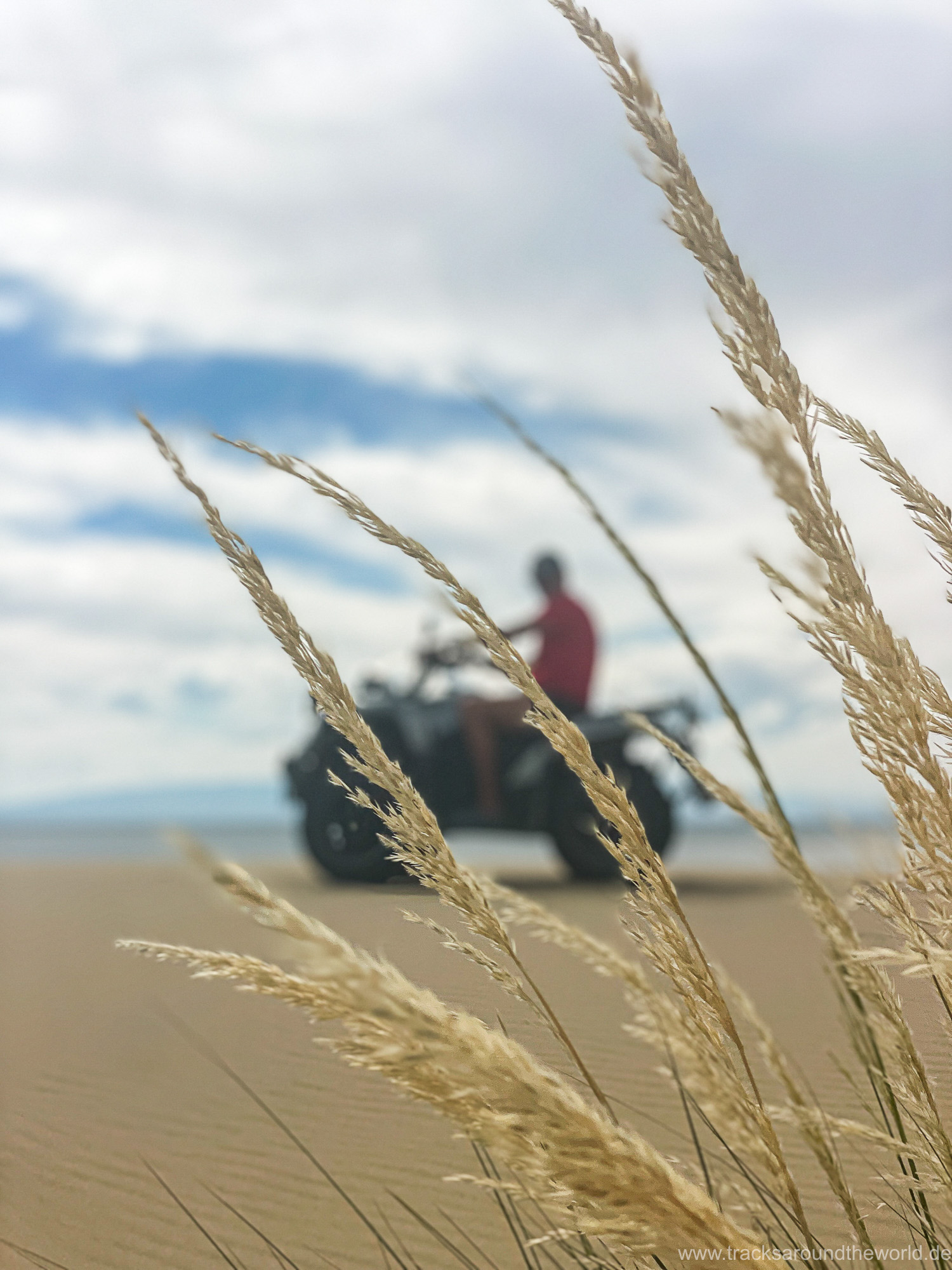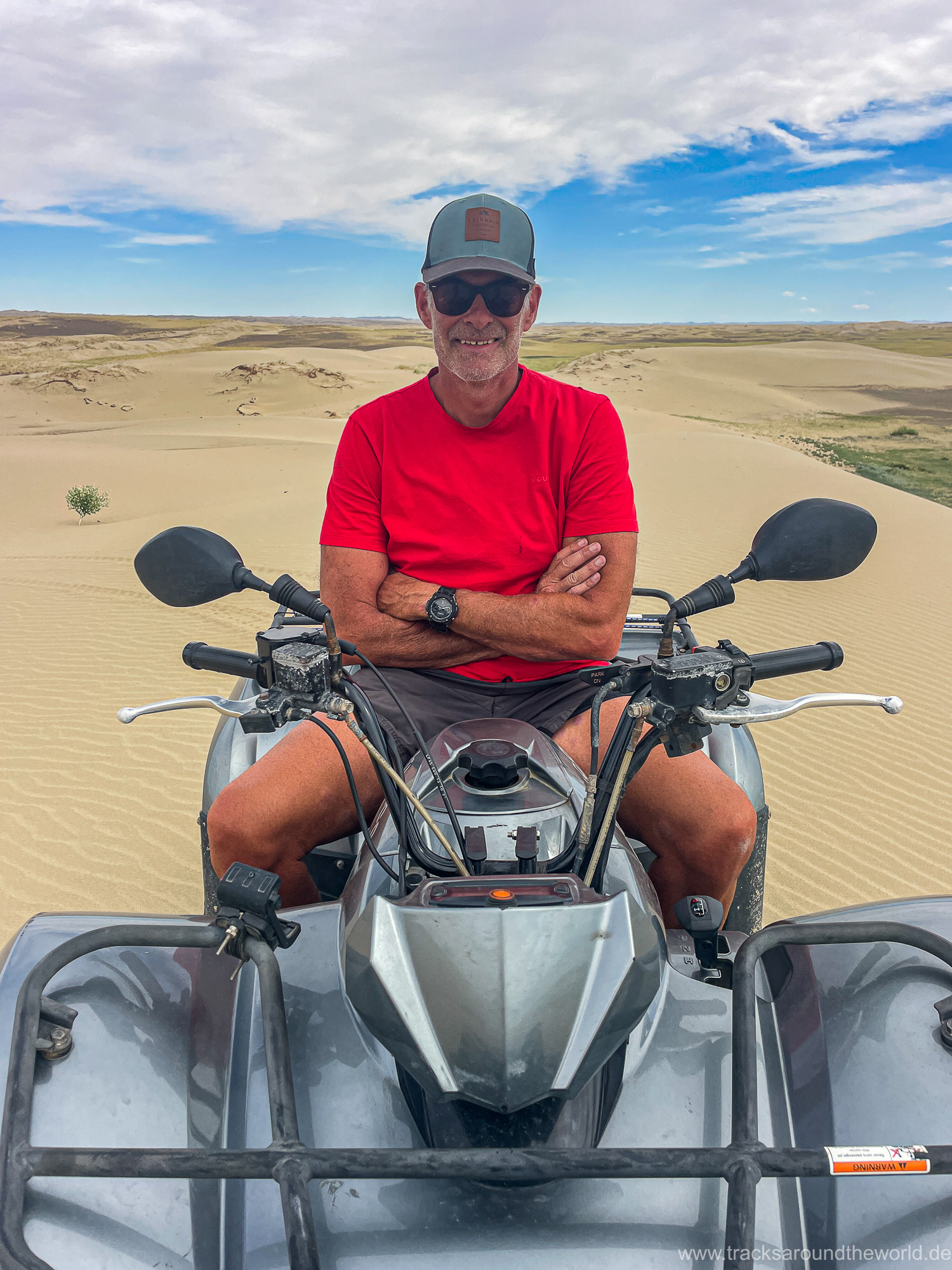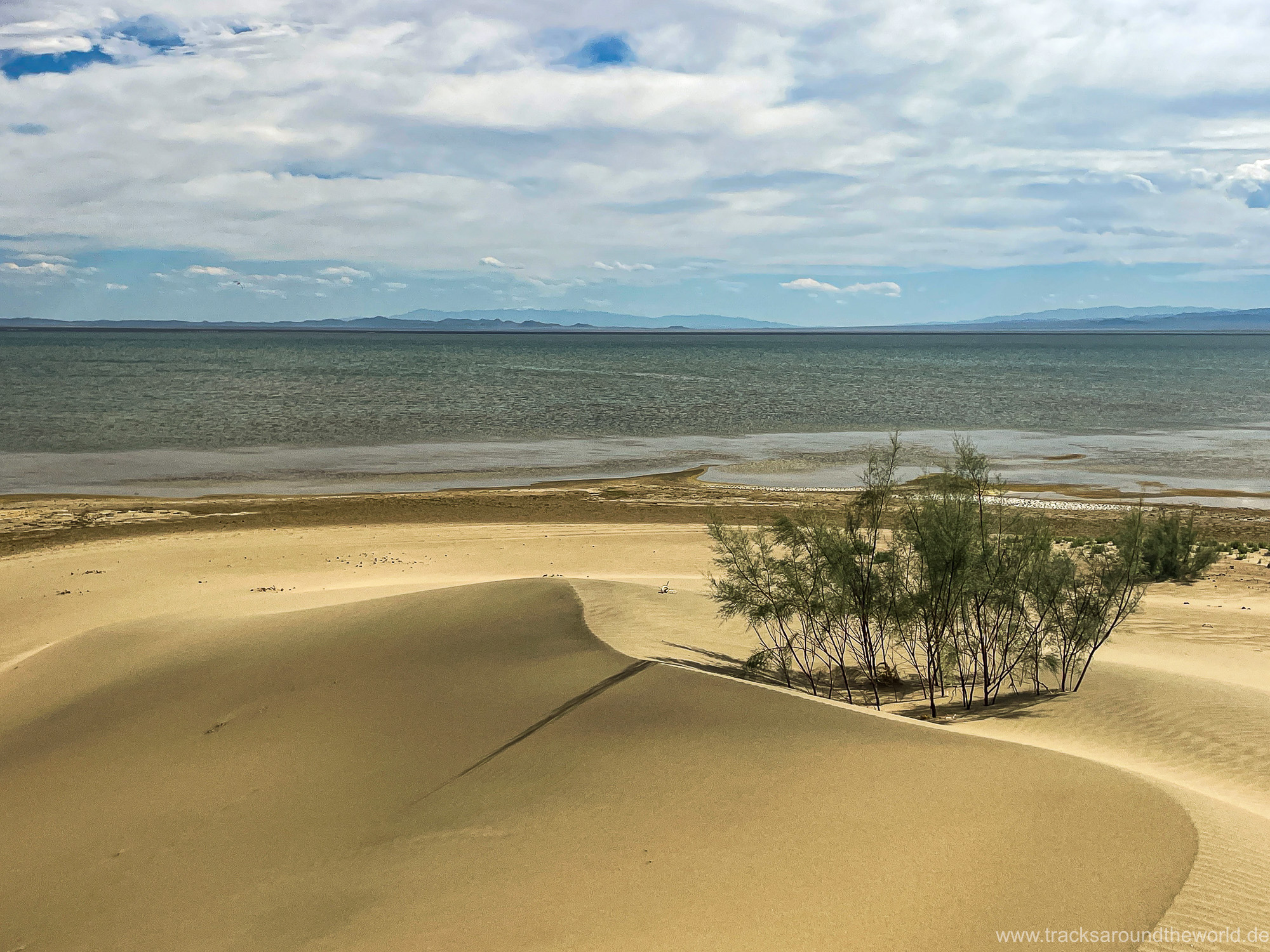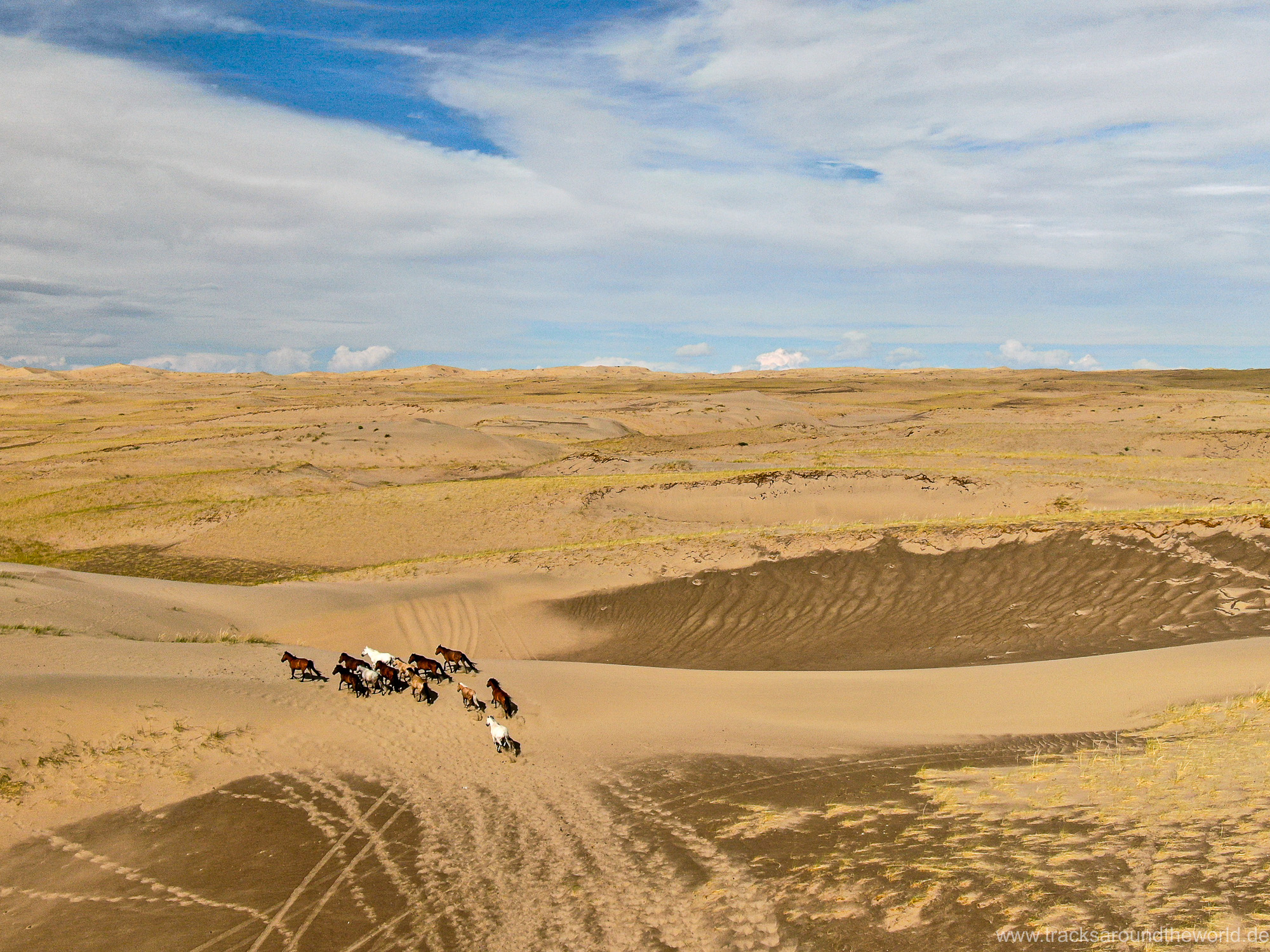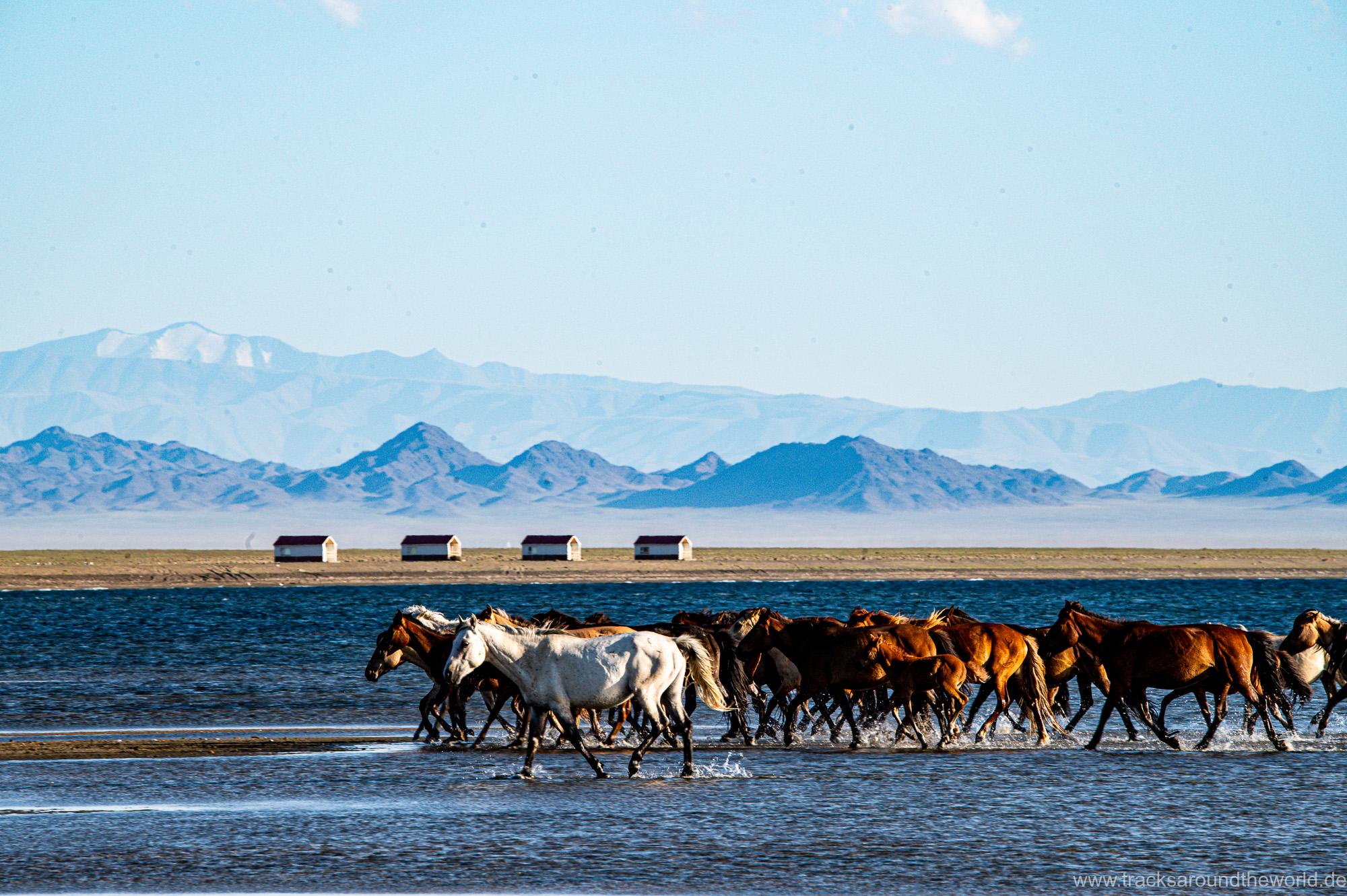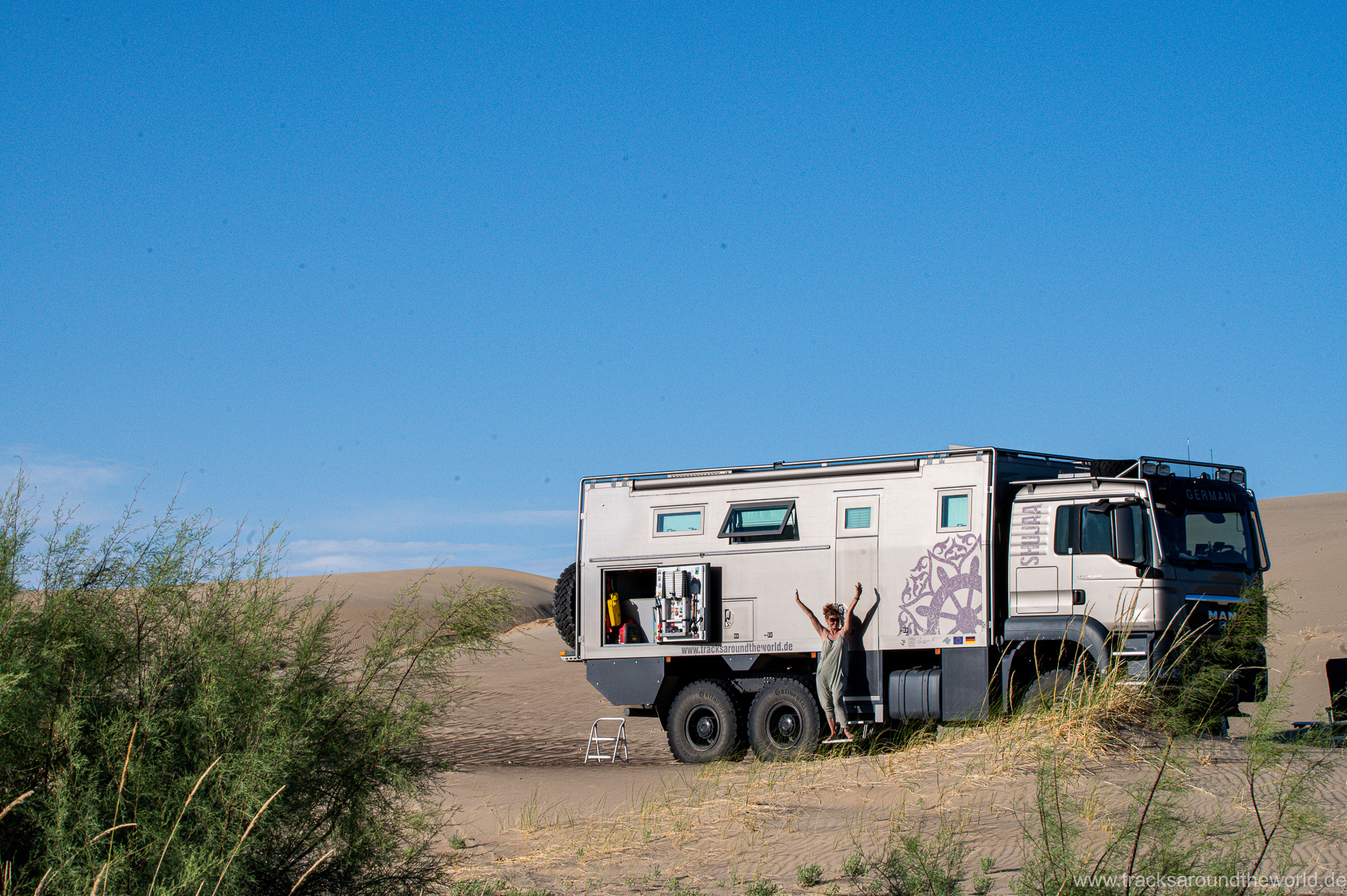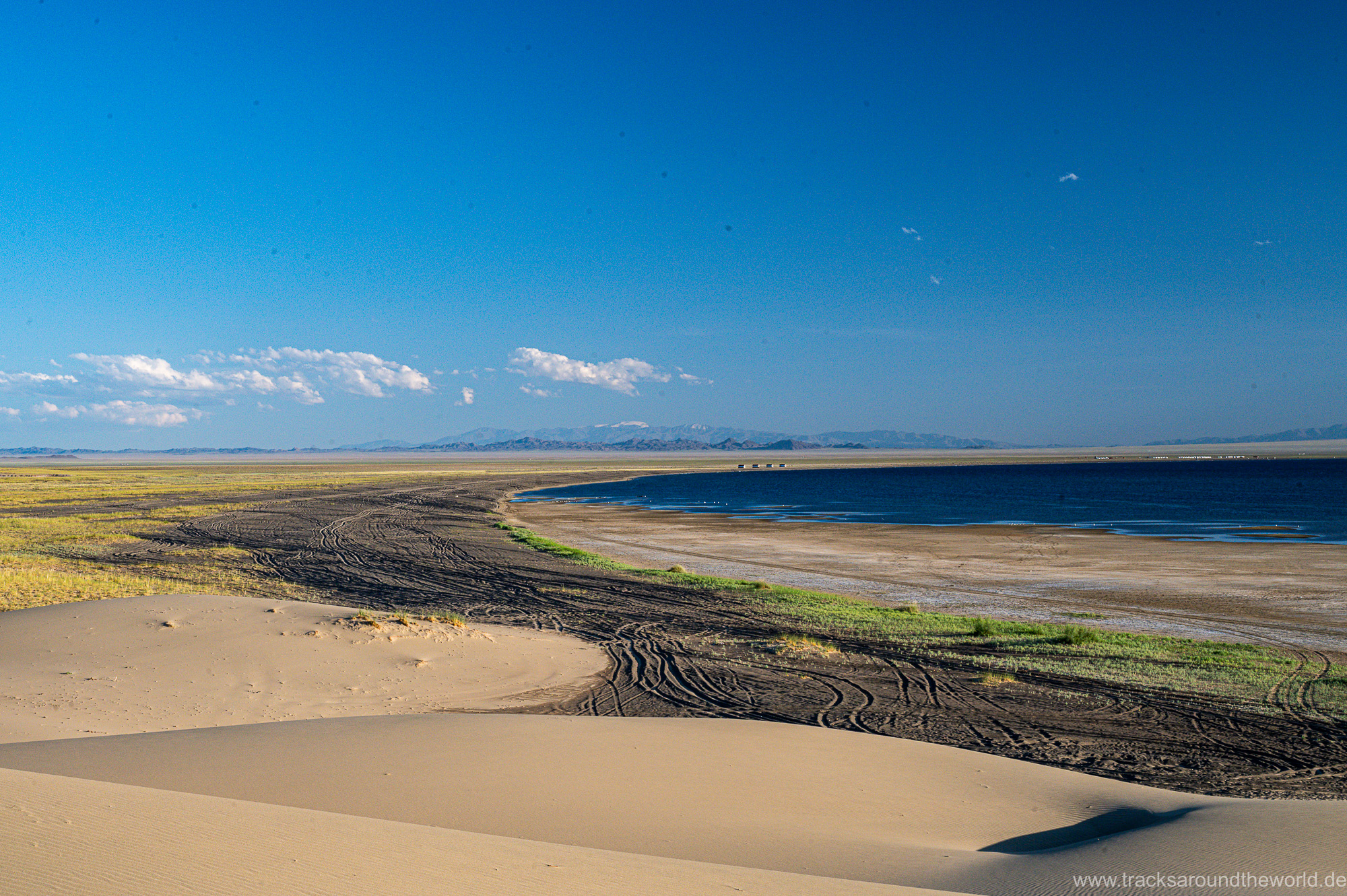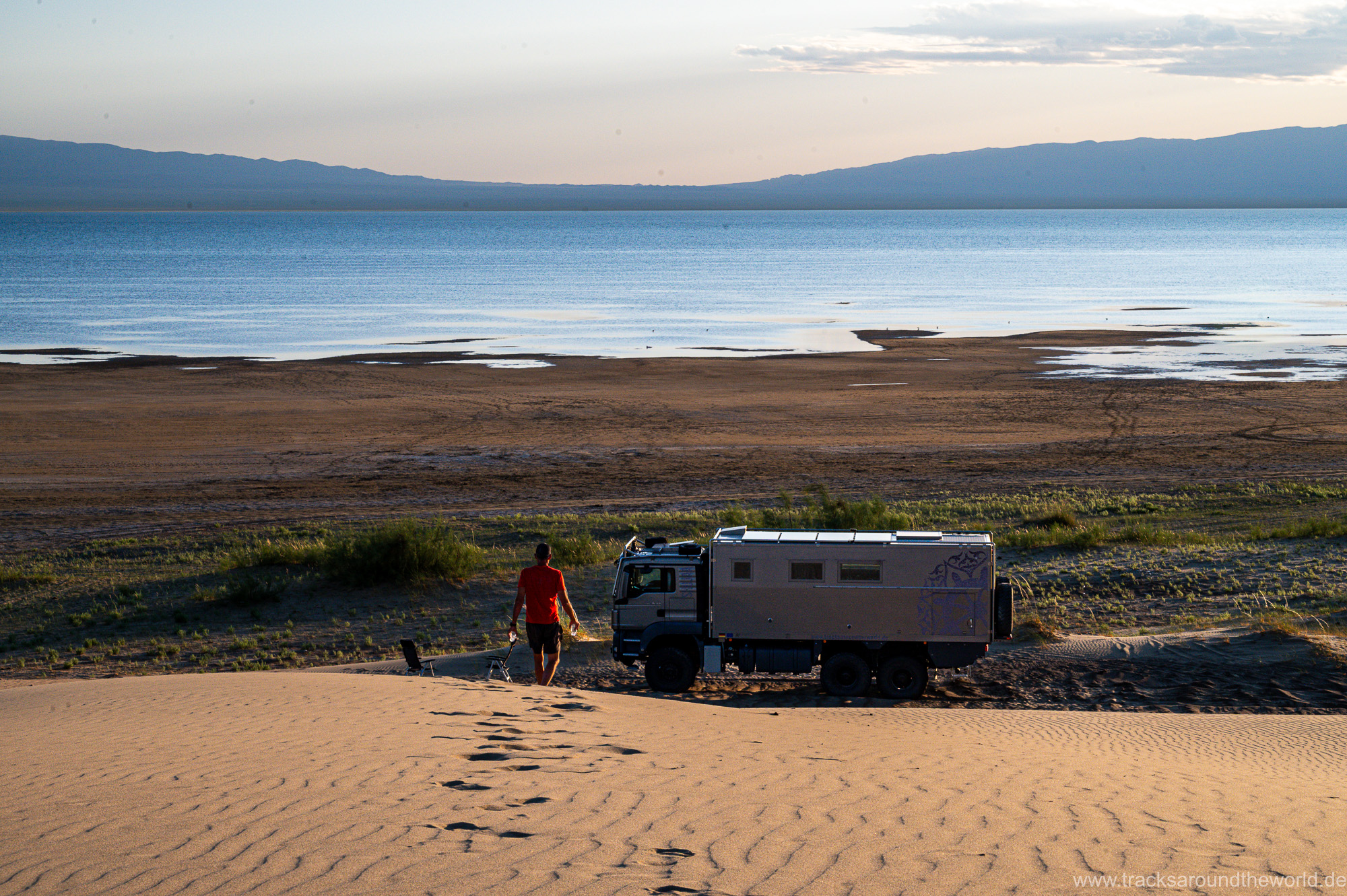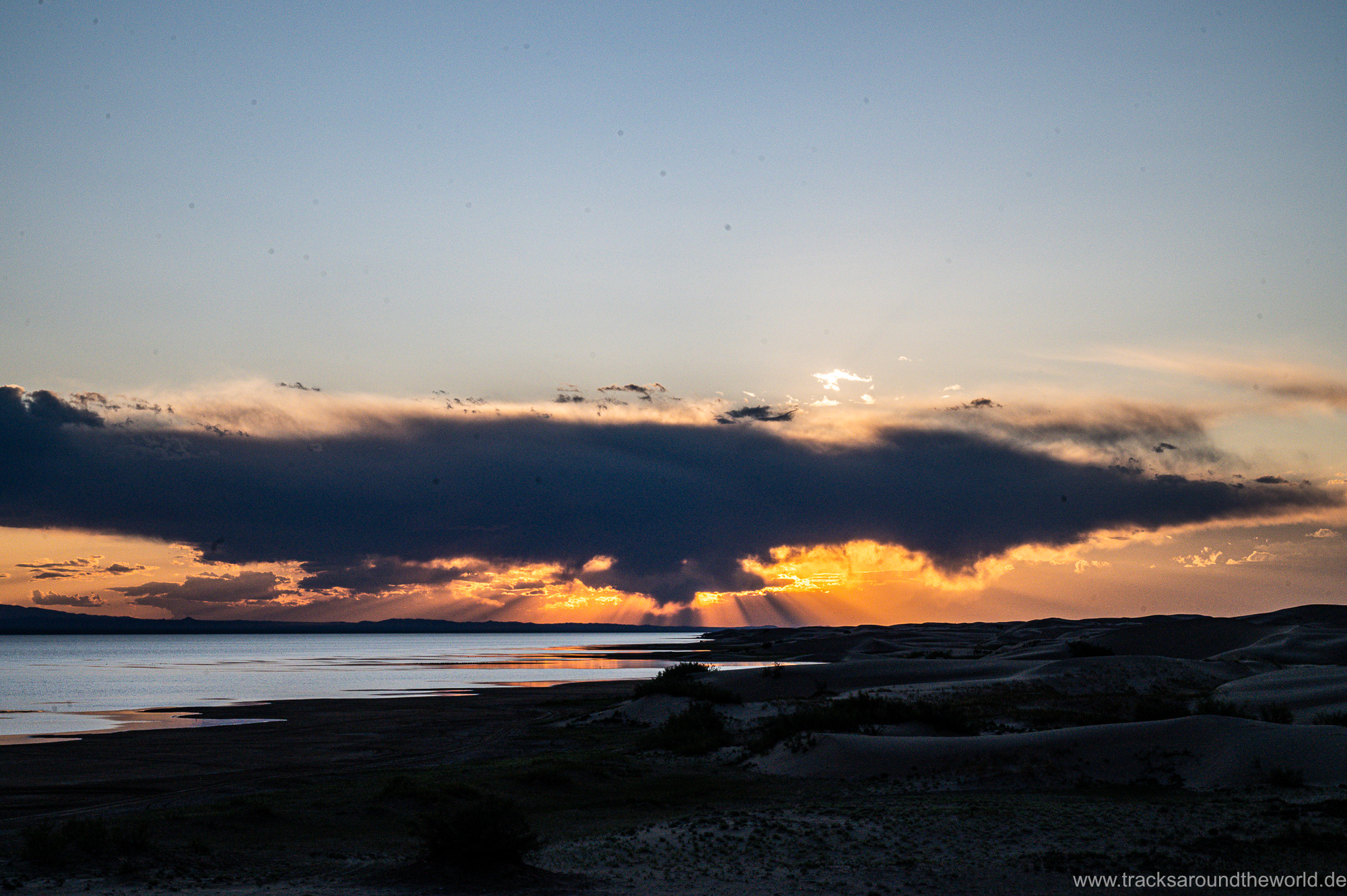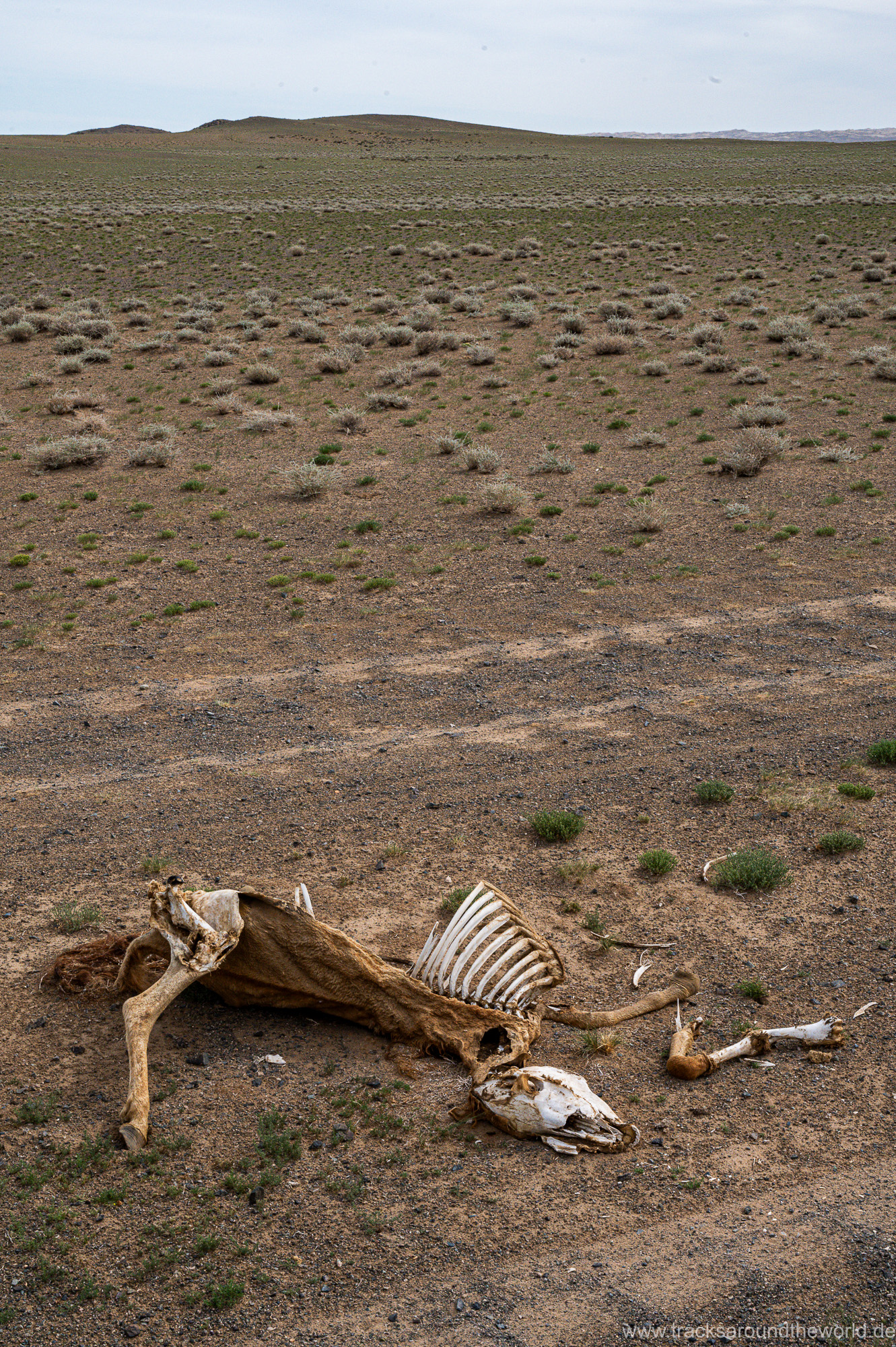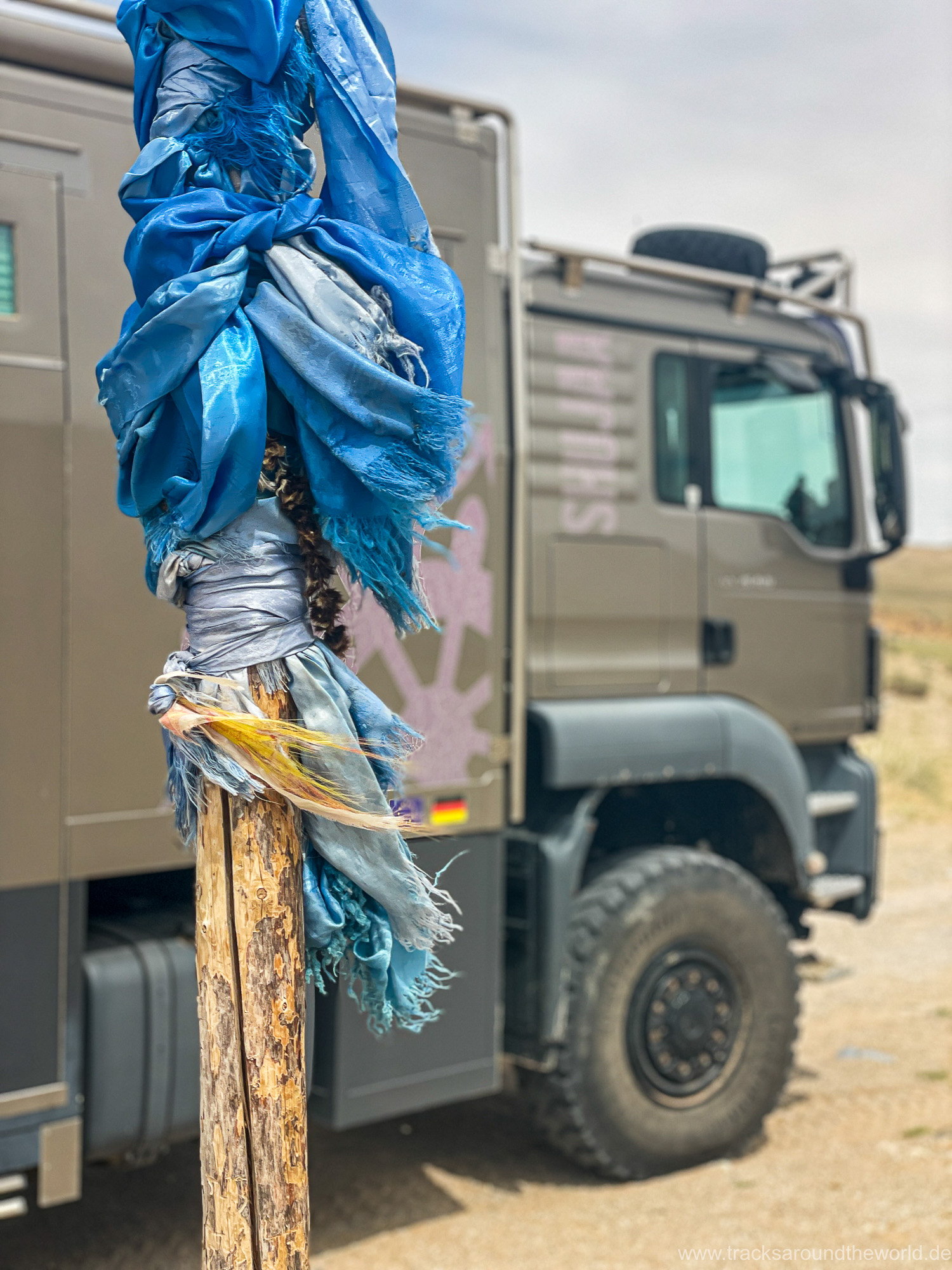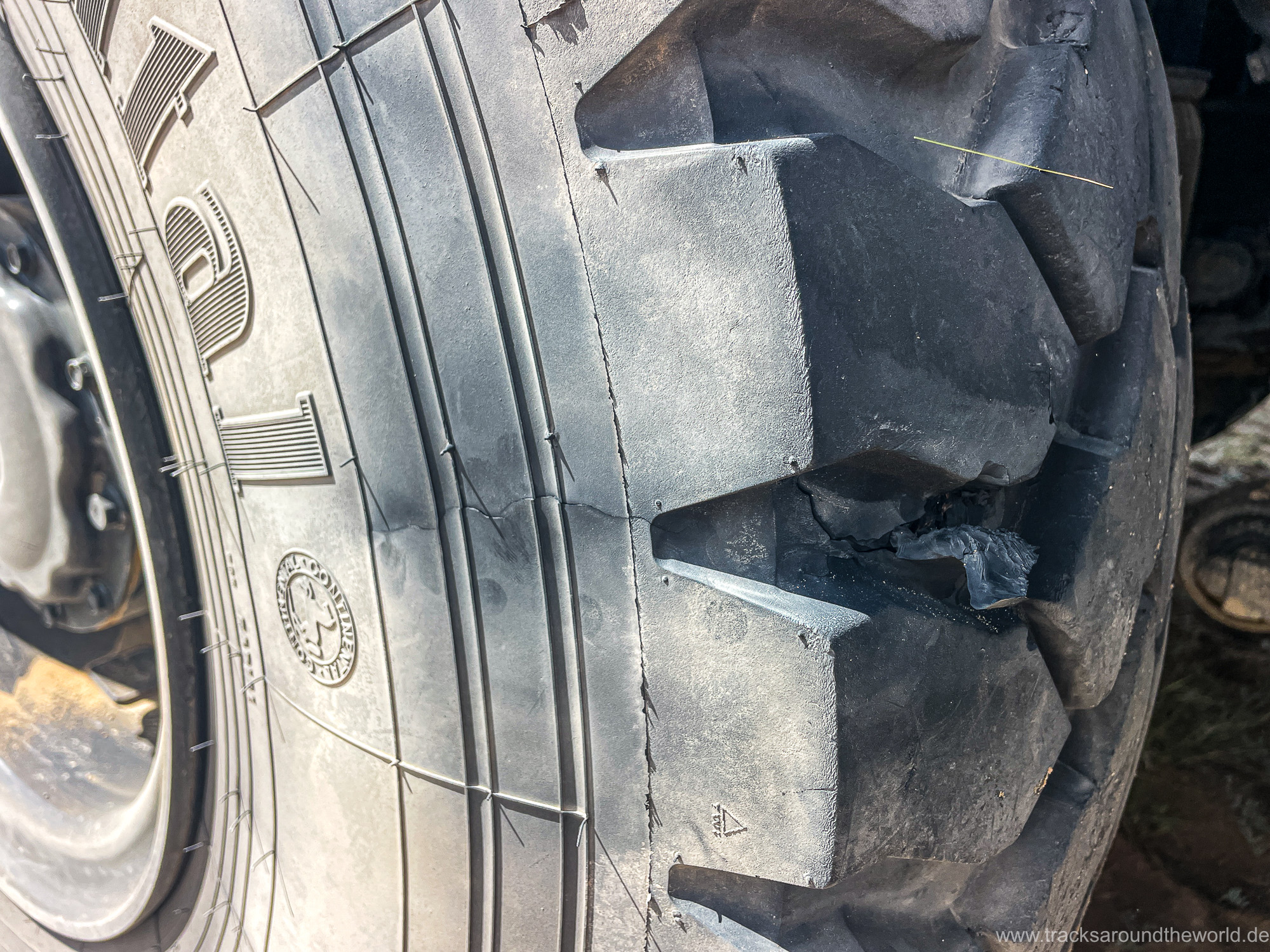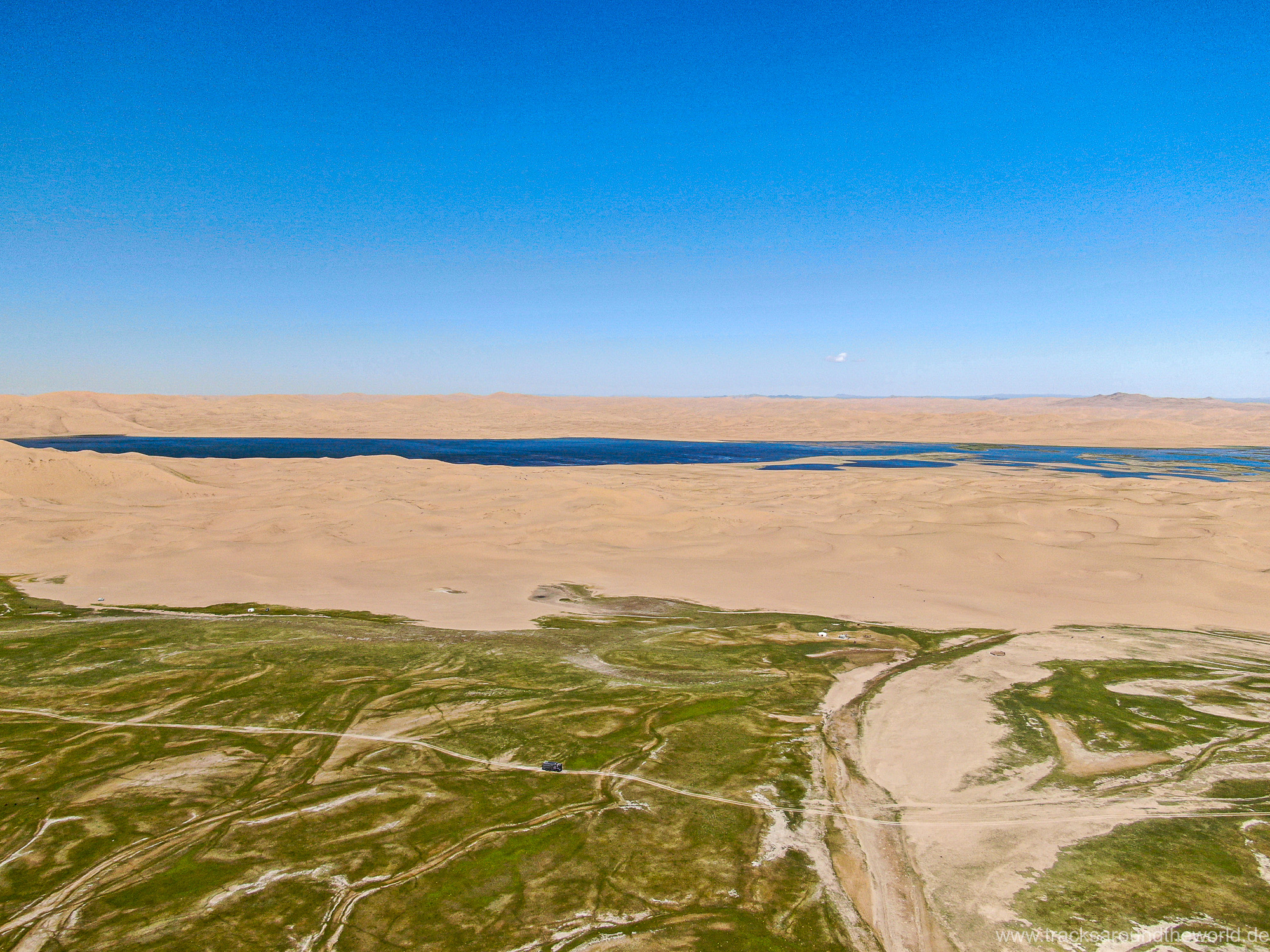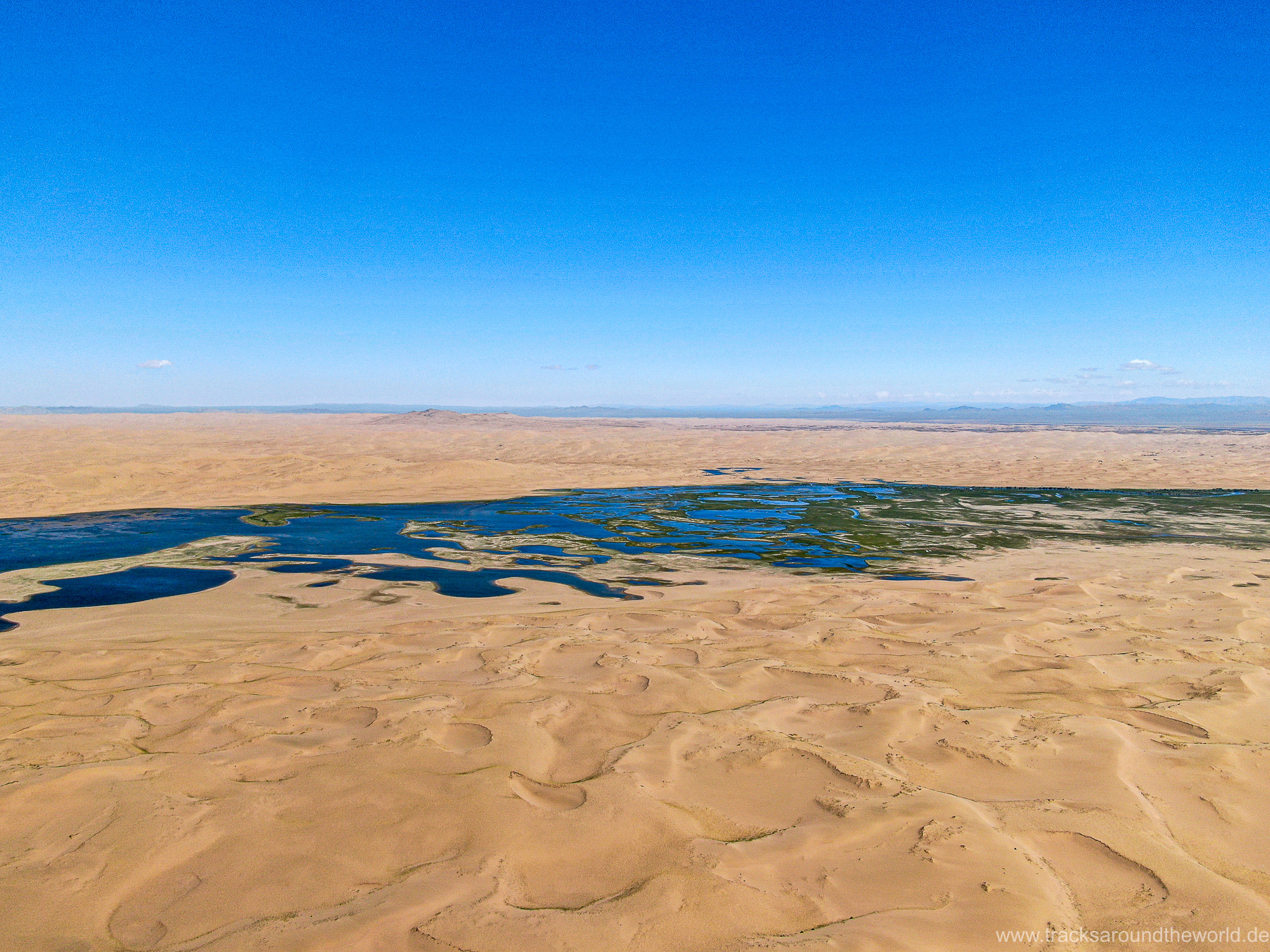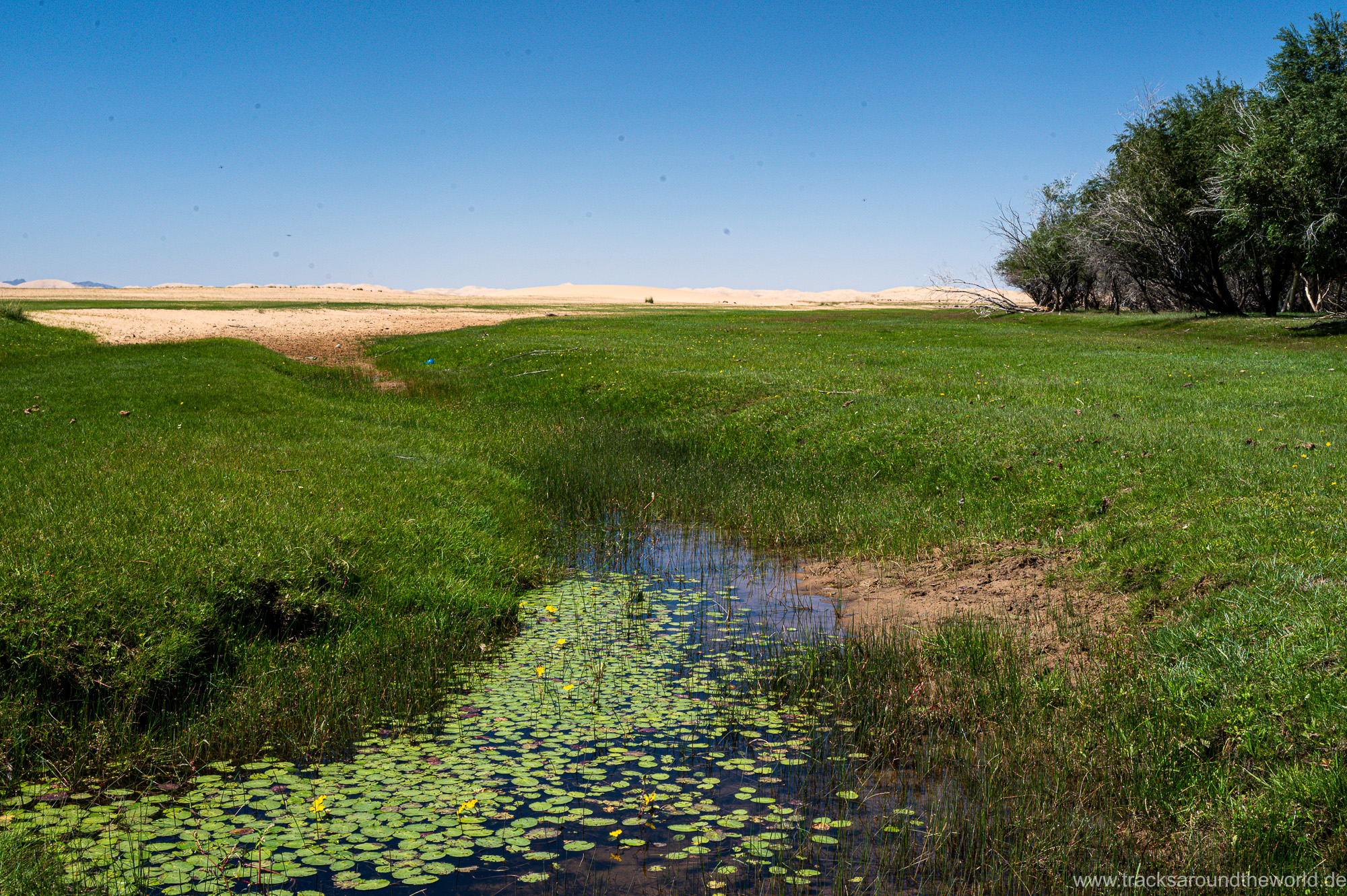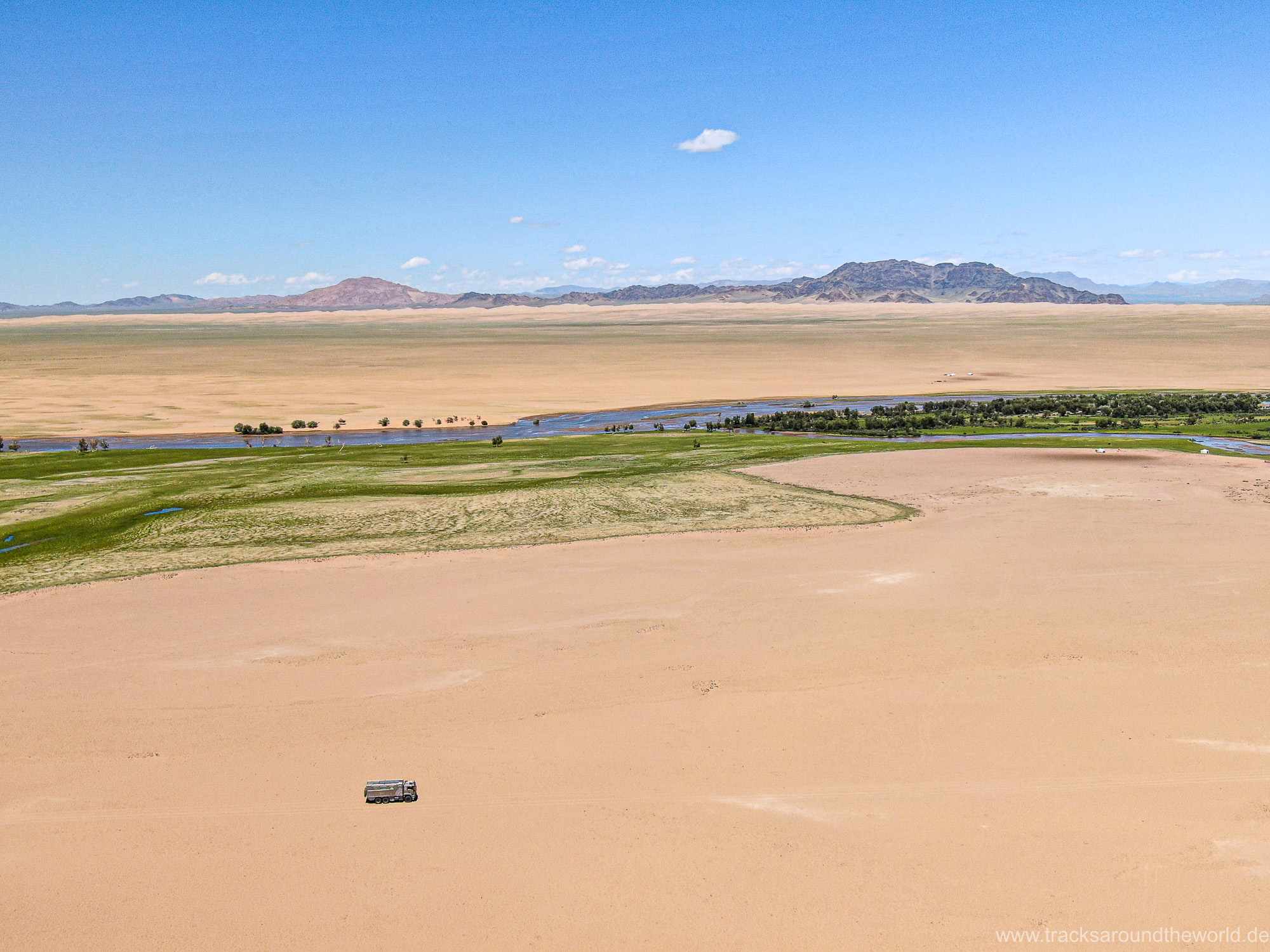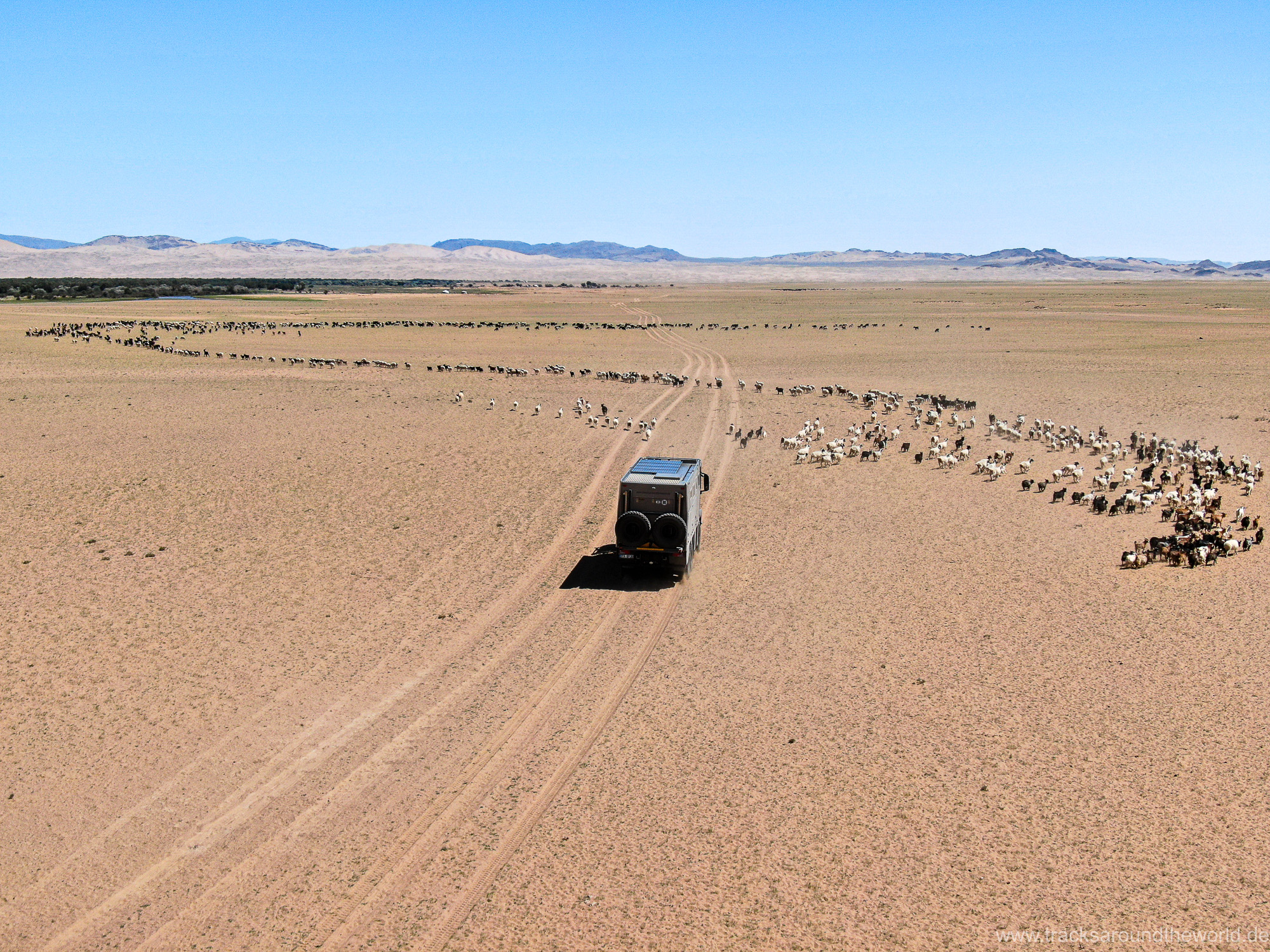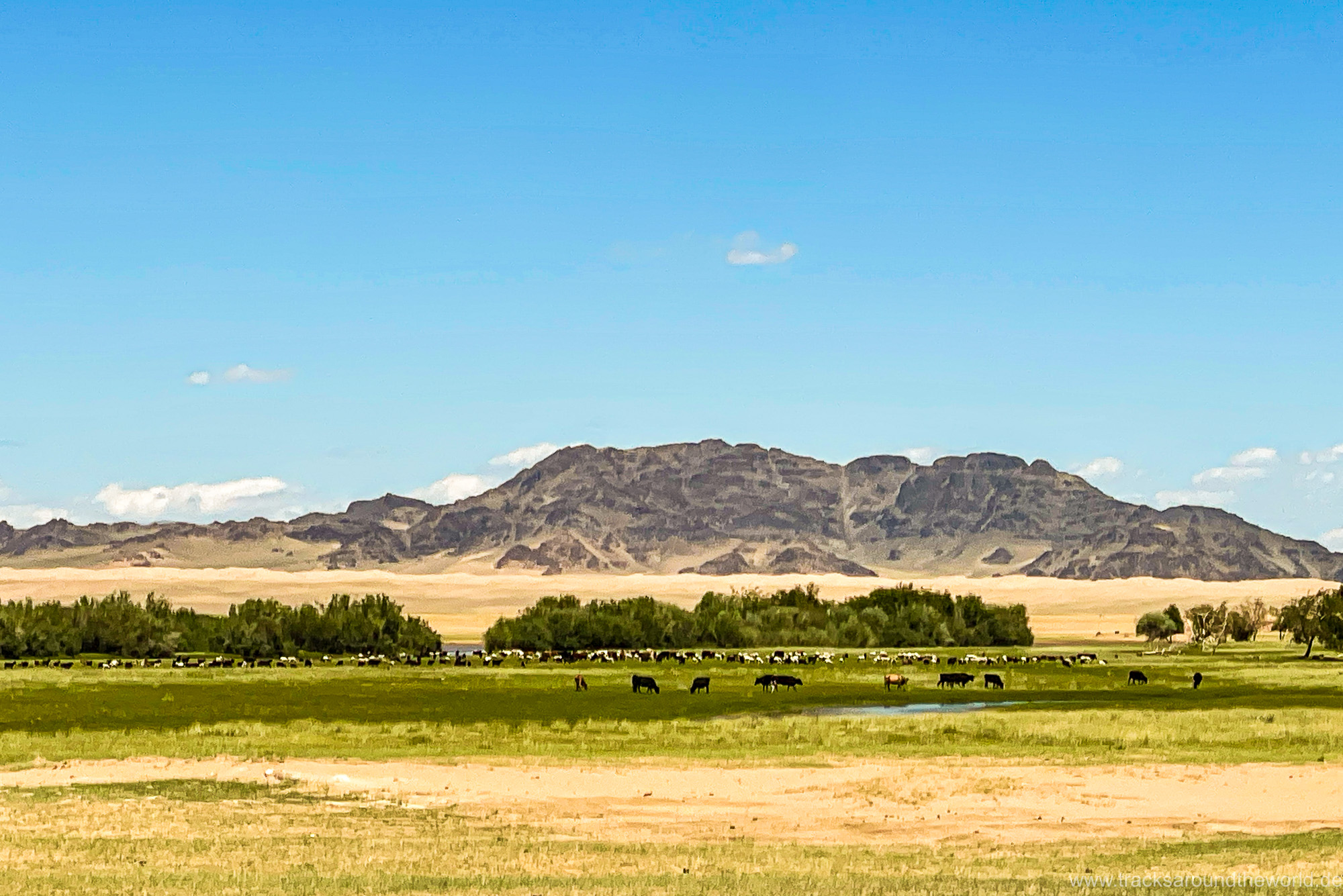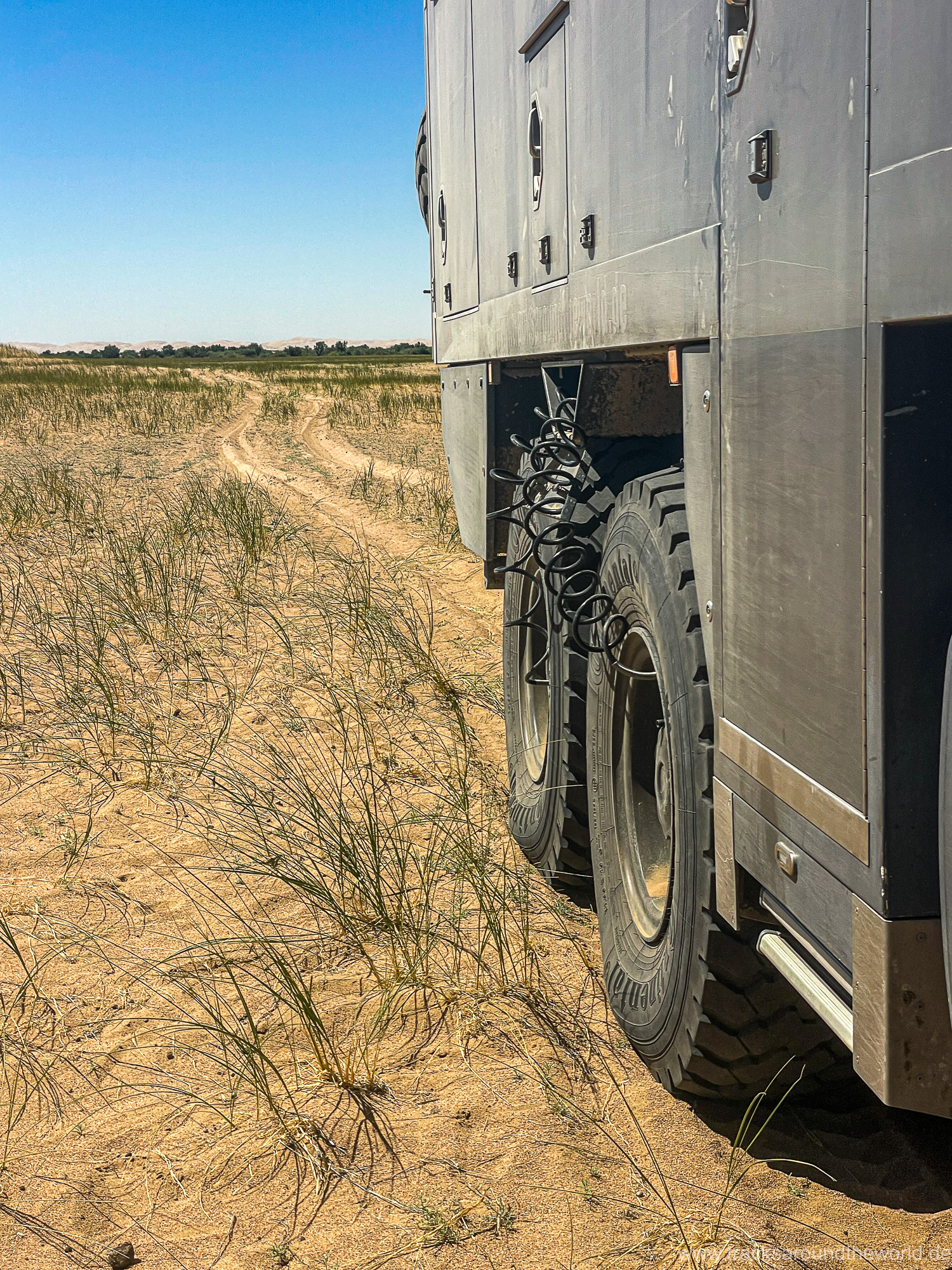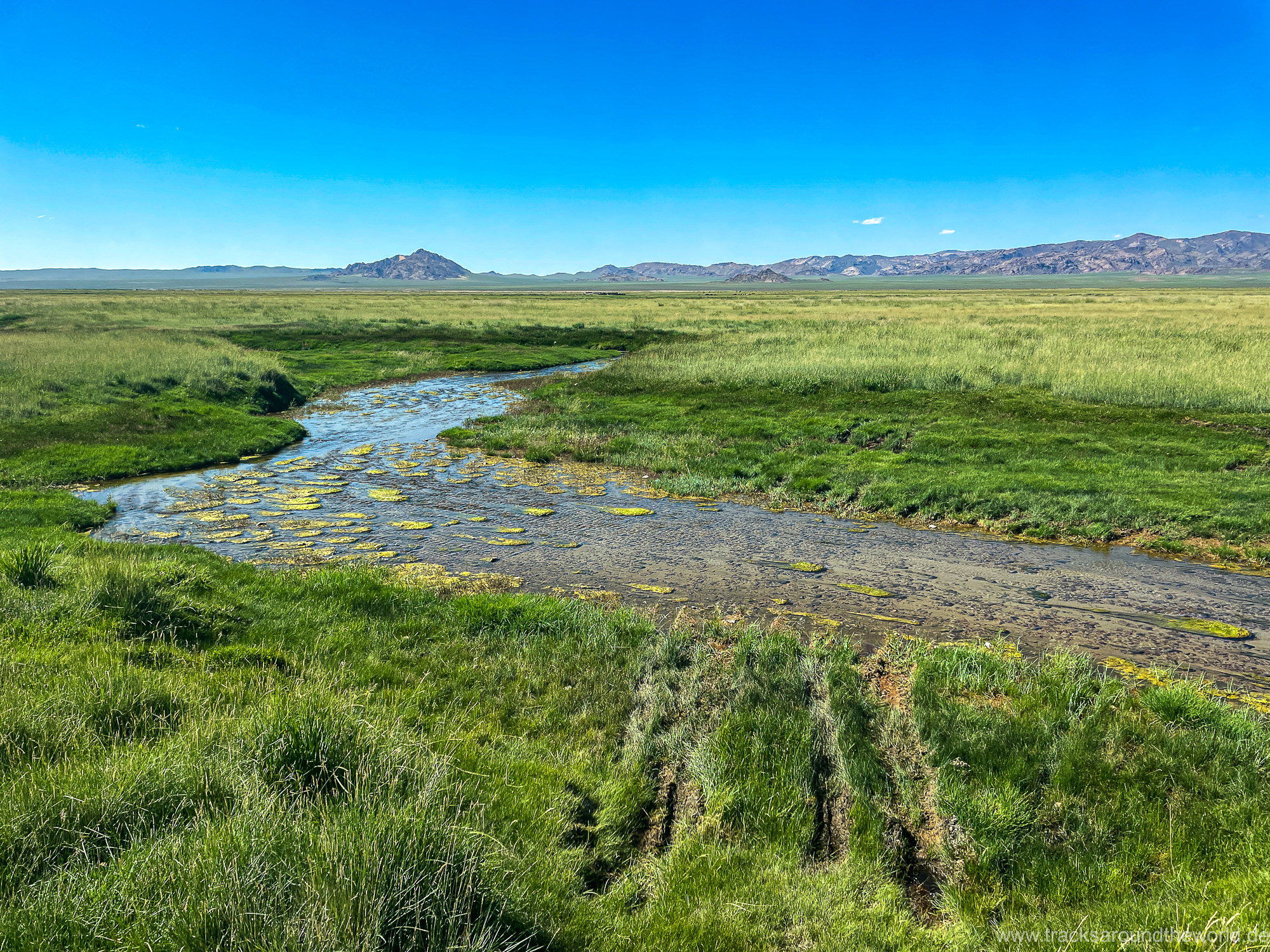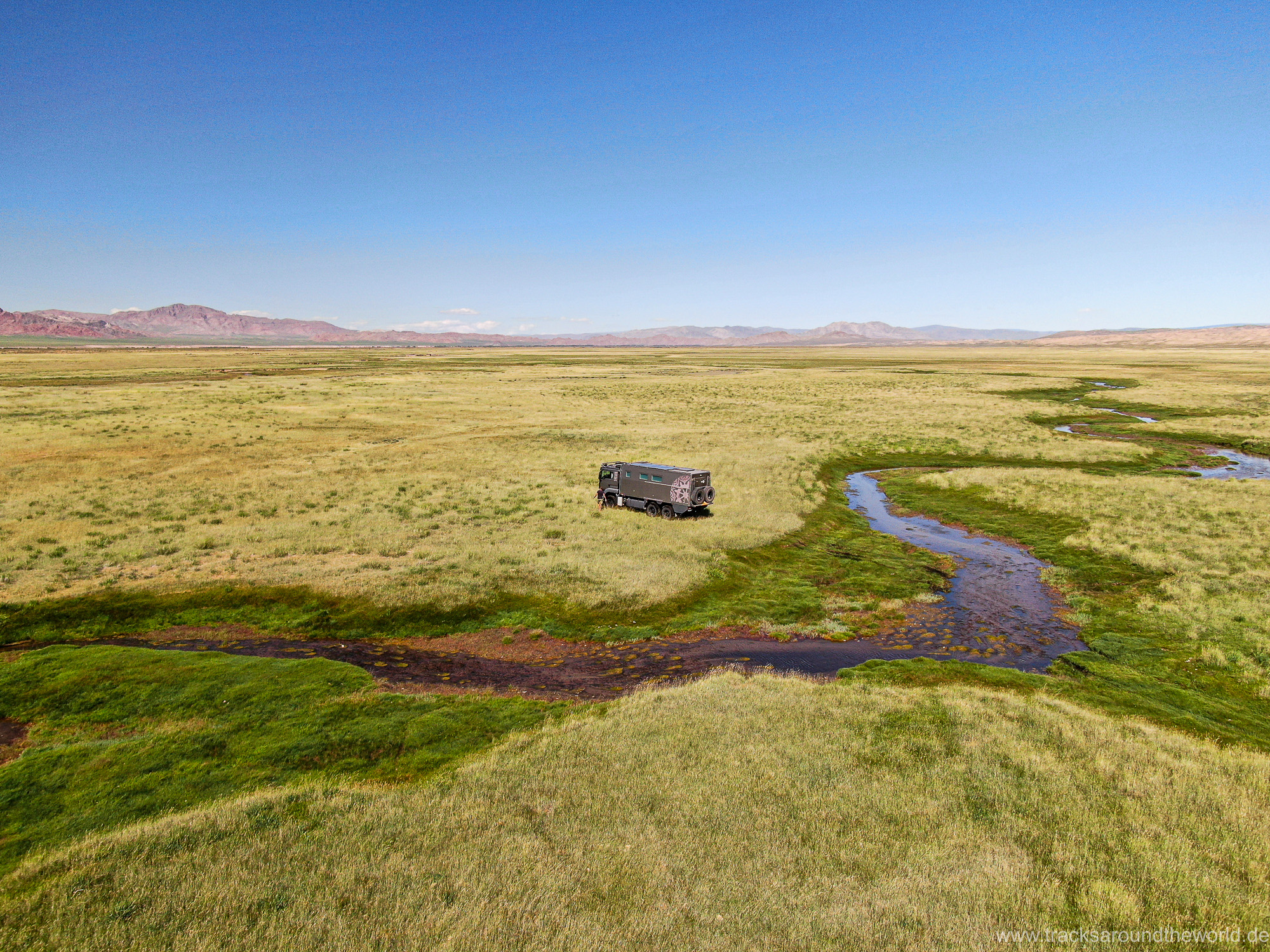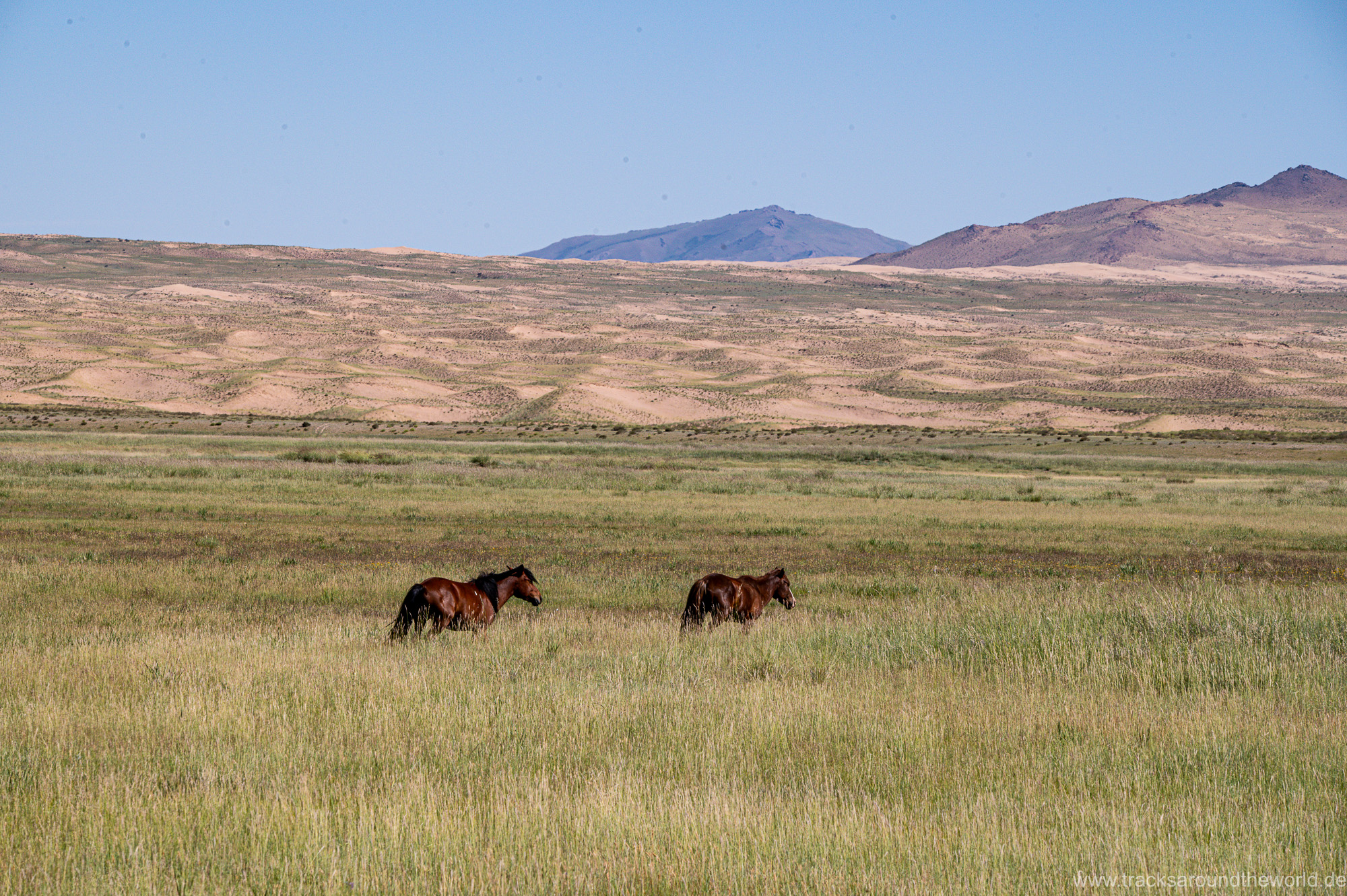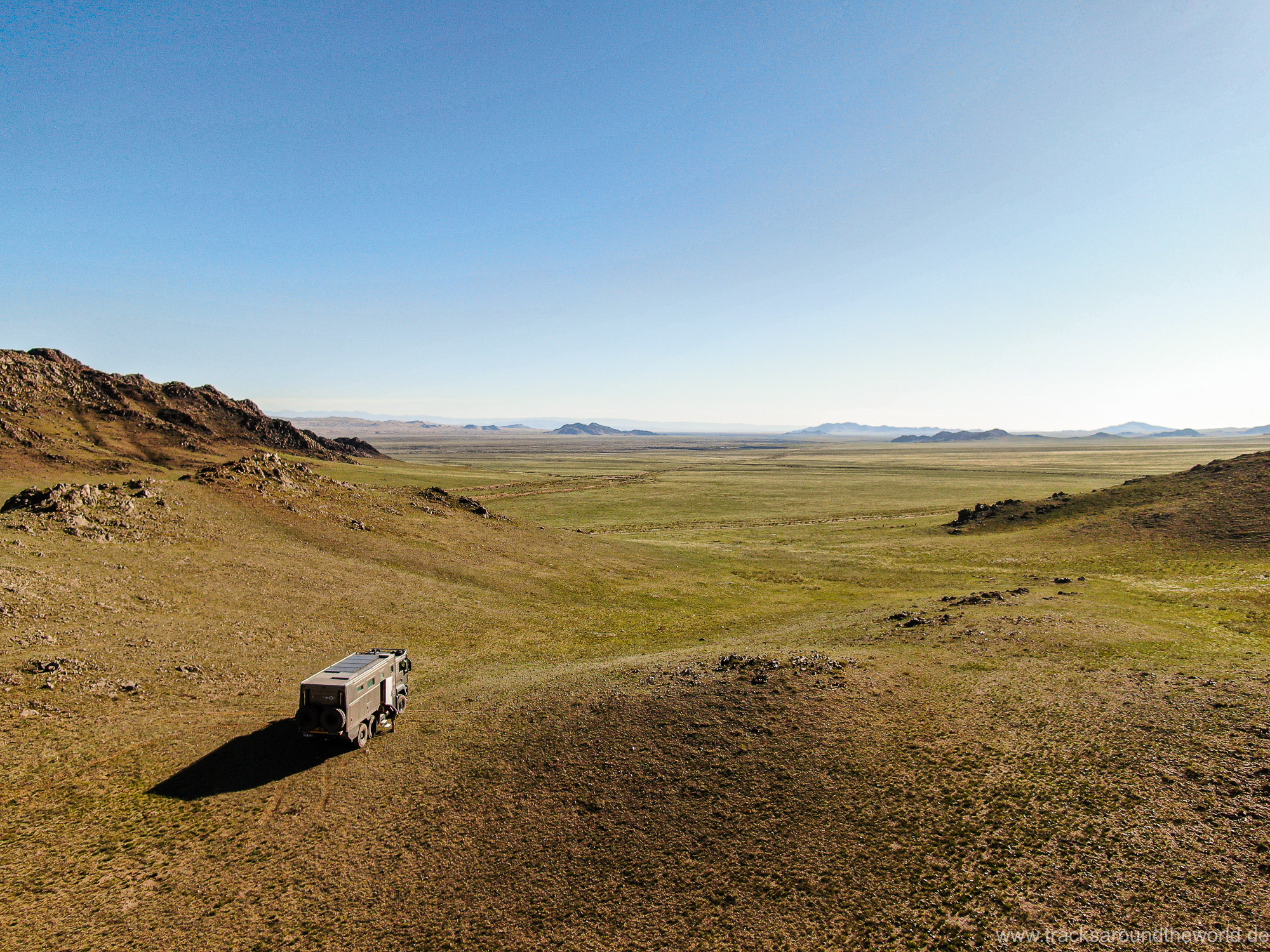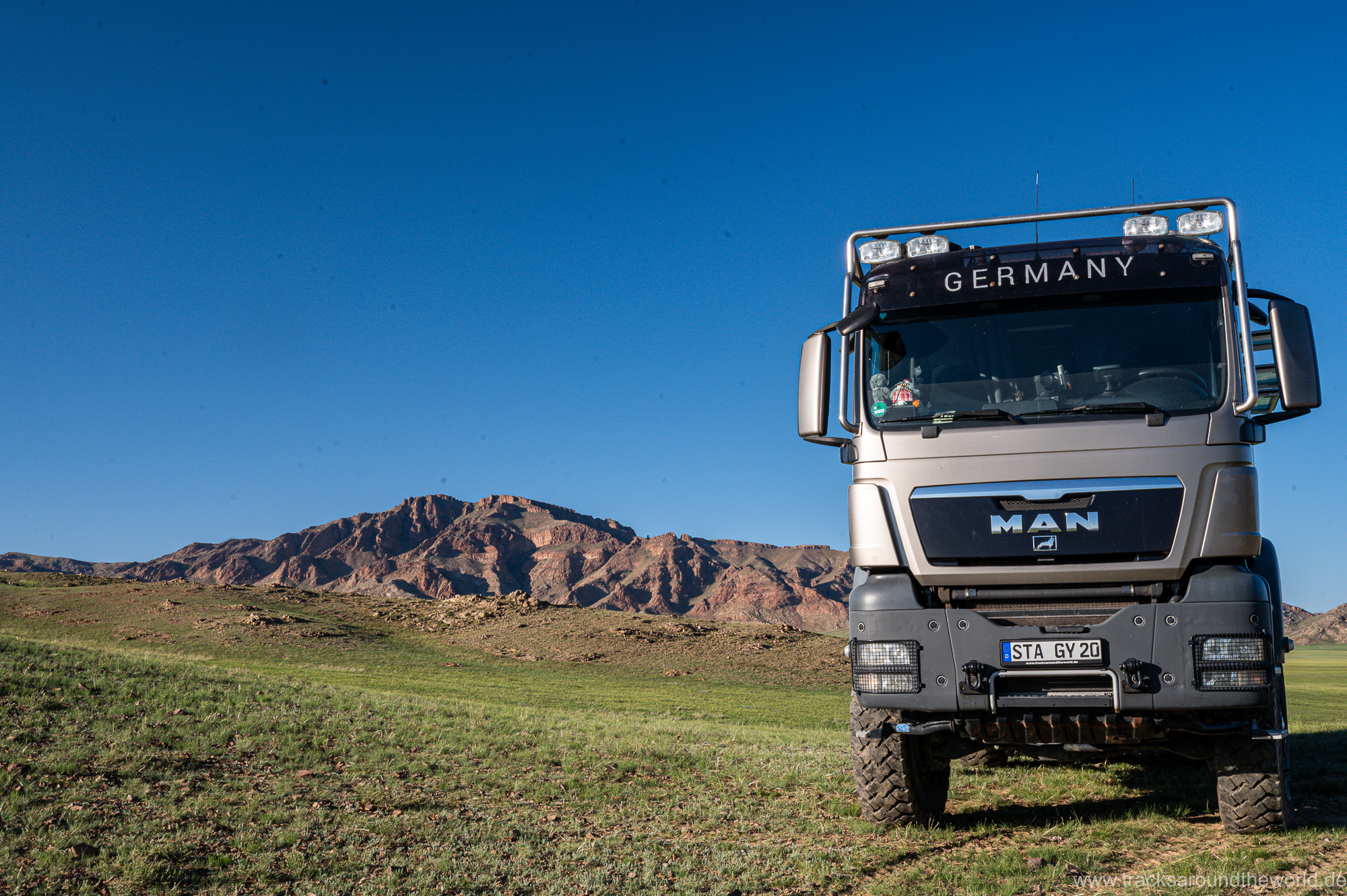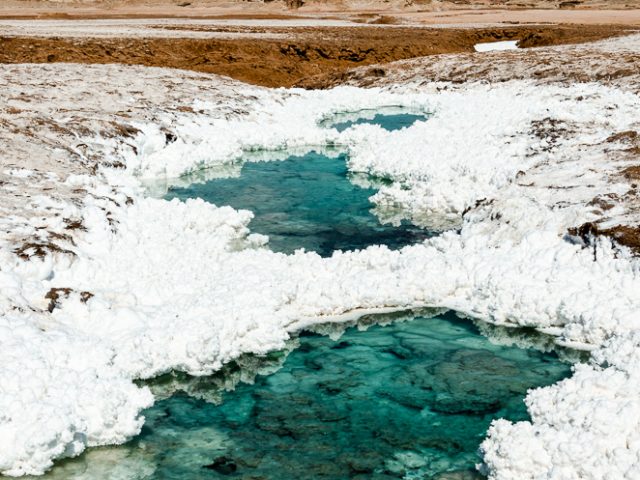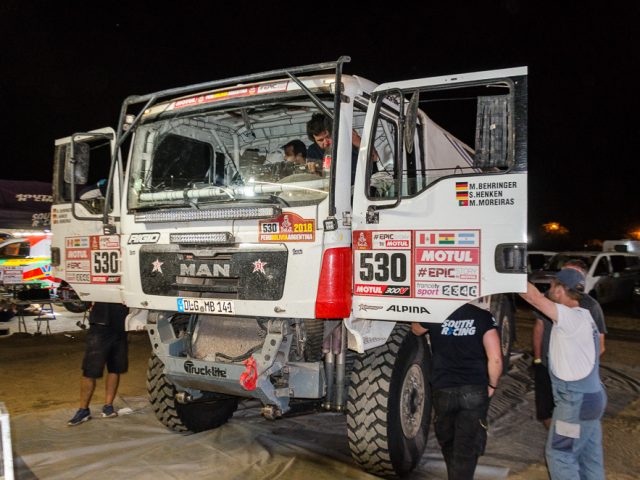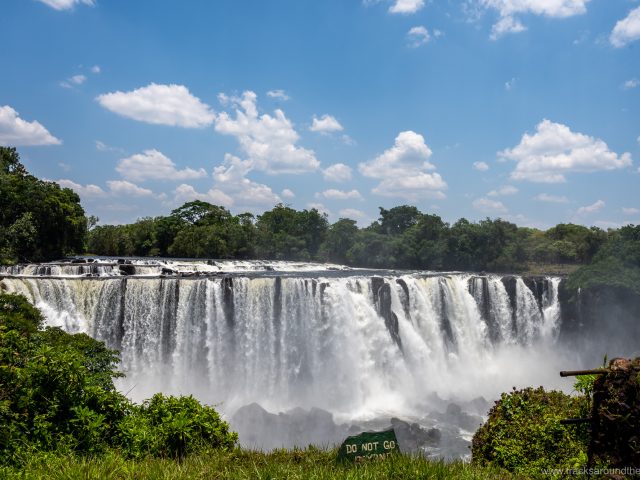After more than seven hours – our longest border crossing in over 300,000 km around the world – we entered Mongolia. While discipline and order still prevailed on the Russian side of the border crossing, Mongolia greets us with wild pushing and disrespectful discussions with the authorities. That is going to be fun in the future – but we ourselves are processed very courteously. This time the chosen truck processing lane is a perfect decision: we “overtake” many vehicles that were far ahead of us on the Russian side.
The first major town is Olgi. We are surprised by how comparatively civilized it is here: supermarkets, decent gas stations (where you can finally pay by credit card again, which wasn’t possible in Russia due to the country’s disconnection from the international payment system), and even a few high-rise buildings. We do some more shopping, give Shujaa a much-needed car wash, have our branch deflector welded back on, and visit the recently opened Golden Eagle Cultural Center. The “Berkutschi” (Eagle Man) we summoned arrives in full costume with his hunting golden eagle in his Toyota Hybrid Prius.
In western Mongolia, in the Altai Mountains, – unlike most other regions worldwide – golden eagles are trained to hunt animals, not falcons: the young chicks are taken from the nest and accustomed to the Eagle Man, and trained to hunt by depriving them of food or giving them food. Since the eagles live quite long, they are released back into the wild after a few years so they can still “get some life out of it.” Overall, the Mongolians treat nature and animals with great respect; not a drop of blood is wasted during slaughter, even to the point where they don’t bury ancestors or wear shoes with pointed tips to avoid damaging the earth. In Mongolia, marmots, martens, foxes, etc., are hunted with eagles. Hunting season is winter, and in summer, the eagles, then fully fed, struggle with heat problems, as we saw with “our” female eagle, who had quite a few thermal problems after an extensive photo shooting. A small sprinkler shower provides some cooling, which she clearly enjoys. The visit to this cultural center is a great start to our Mongolian trip.
We then stock up on 800 liters of fresh water in a “water house”: since hardly any household in Mongolia is connected to the fresh water supply, there are water houses in every town where residents with a water card can fill canisters with their water needs. Drinking water quality and ice-cold! Afterwards, we head to Lake Tolbu Nuur, where – as in Ölgi – we meet up with German and Austrian overlanders again. While many European overlanders are now traveling in the Pamir Mountains and the STAN states, foreign vehicles are becoming a rarity toward Mongolia. We suspect that this is too isolated for many, offers too little infrastructure, and is too far away.
Northwestern Mongolia is home to many lakes, and another highlight is Dörgön Nuur with its sand dunes reaching the water’s edge… This is where we use our quad bike Shujoo again, and the gin and tonic sundowner reminds us of the deserts of the Arabian Peninsula. We continue east along the Mongol Els sand dune area and reach stunning regions where verdant river plains merge almost seamlessly into golden sand dunes. Rarely have we had driving days that were so challenging, given the combination of length, driving technique, and navigation/scouting for the best track: Numerous fords (the deepest one, which reached the top of our not-so-small tires we didn’t photograph of course 😉), the constant need to orient ourselves (sometimes with the help of our drone, satellite maps on our navigation systems, and many “on foot” sections) for the best route, as well as occasional muddy tracks, leave us exhausted and falling into bed in the evening. We also experienced our first flat tire on that tour. A crack because of a rock on the flank is unfortunately beyond repair.
However, finding an overnight spot was easier than ever on our world trip! Simply drive up the next hill, find a flat spot, and enjoy the view!


